



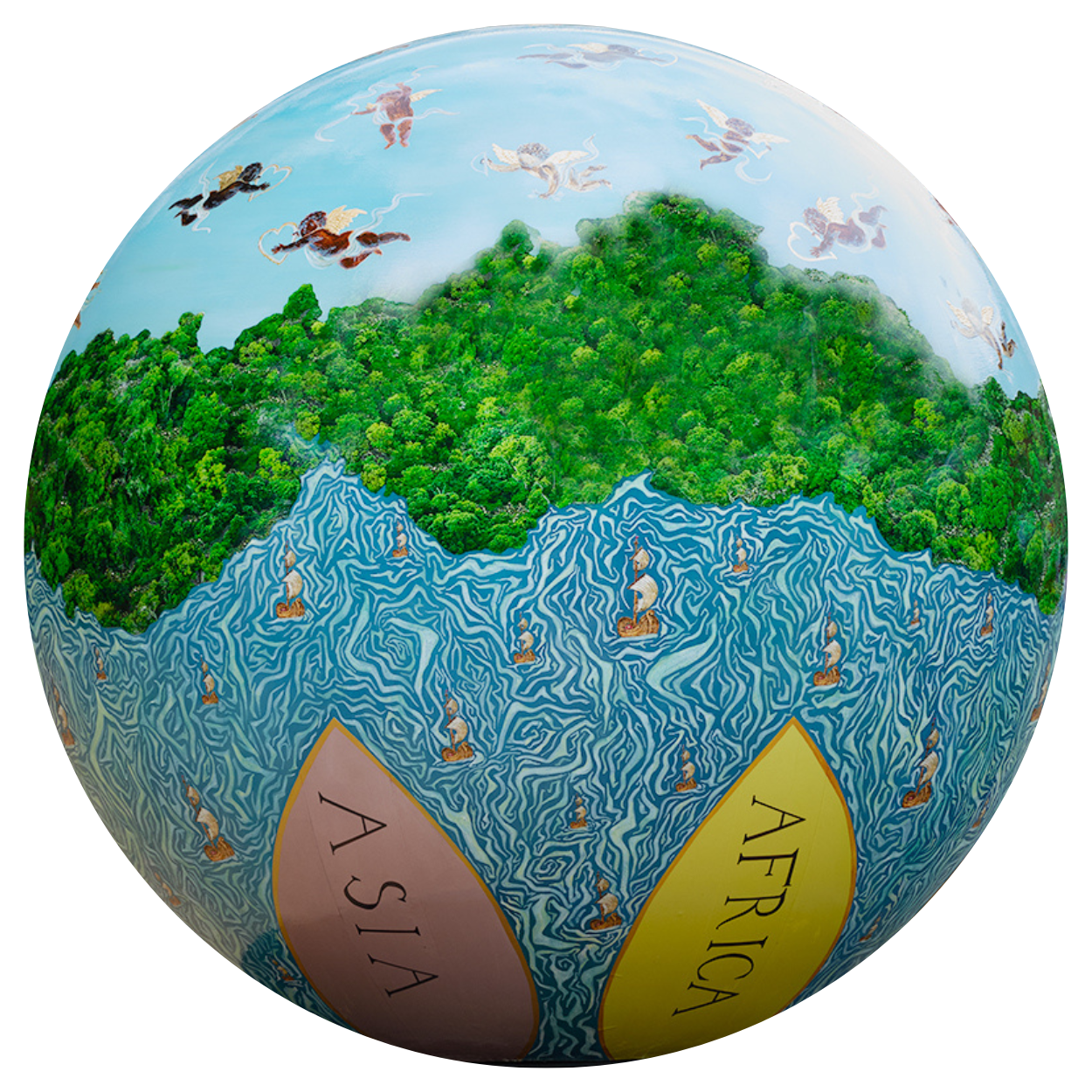
| What 3 Words: body.swim.plans |
Nicola's design responds to the theme ‘Reimagine the Future’, which gives us free rein to imagine the society we can create when we have a full understanding of our shared history; the place the UK can hold in the world when it acknowledges its past; and who we can be as people and a country when we give full dignity to all.
My globe represents the deep-rooted connection between racial justice and climate justice - two of the most urgent issues of the twenty-first century. It is widely accepted that there is an intrinsic connection between the historic oppression of people, and the exploitation and plunder of the world’s natural resources.
My globe is enveloped by the Guiana Shield; one of the largest remaining intact rainforests on earth, a protective sanctuary between heaven and earth, the difference between life and death. Above the rainforest, atop my globe, the sky is bursting with black and brown angels embellished with 24 karat gold. Beneath the forest is the sea and a map which reimagines the world as a water lily. My globe’s theme is the last stage on The Journey of Discovery.
I hope that as we work together to recognise our shared history of the Transatlantic Trade in Enslaved Africans, my artwork will serve as a reminder that harnessing the possibilities of our future rely on us acknowledging how that history has shaped our present. My globe ultimately represents hope. We are still blessed to have the opportunity to preserve the Guiana Shield, the 'lungs' of the earth, and all the wonderful secrets it holds.
STATEMENT FROM WESTMINSTER ABBEY
“History has always been political. Great traumas have been written out of the narrative, and crucial experiences have been neglected. At Westminster Abbey, where some of our history is set in stone, we have a particular responsibility to keep working at the story we tell. We must strive to remember truthfully, and with an eye to justice.
Welcoming the World Reimagined globes to the Abbey is an opportunity to help correct the record and explore the truth of the history we share. Nicola Green’s globe in particular alerts us to the interconnectedness of all species and the planet, and our duty to protect each other. With the help of the globes we will be better informed about our history and more alert to justice and hope for the future.”
The Very Reverend Dr David Hoyle, The Dean of Westminster
Nicola Green is a critically acclaimed artist, social historian and public speaker. Green has established an international reputation for her ambitious and insightful projects that can change perceptions and challenge prevailing narratives of identity, power, leadership, race and gender. Green has a unique perspective, driven by her belief in the capacity of the visual image to communicate important human stories. She chooses to assume the role of ‘witness’ to momentous occasions taking place across the globe, and creates and preserves social-cultural heritage for future generations.
Green gained global recognition for her seminal project In Seven Days…. which resulted from her unprecedented artistic access to Barack Obama’s 2008 Presidential campaign. With a front row seat to historic events, Green created a complex visual legacy of this moment in history, which constantly evolves in its dialogue with the future Green’s project, Encounters, was a ground-breaking exhibition of over fifty portraits of the world’s most prominent religious leaders. A global story, it is unique in its depiction of the world’s major religions together for the first time in art history and without hierarchy. Sitters included Pope Francis, the Dalai Lama, Archbishop Desmond Tutu, Archbishop of Canterbury Justin Welby and Pope Benedict XVI.
Green is dedicated to social impact and has worked tirelessly towards creating positive change and equality in the artworld and beyond. Green co-founded and directed the Diaspora Pavilion at the 57th Venice Biennale, showcasing 22 artists from culturally diverse backgrounds. Green also founded the Khadija Saye Arts programme at IntoUniversity which addresses the issue of BAME representation in the creative industries. As co-founder of Sophia Point Rainforest Research Centre, Green has championed the preservation and exploration of the Guiana Shield, the largest remaining pristine rainforest on earth. Green has mentored many aspiring young artists and is the Patron of Women in Art.
Nicola's design responds to the theme ‘Reimagine the Future’, which gives us free rein to imagine the society we can create when we have a full understanding of our shared history; the place the UK can hold in the world when it acknowledges its past; and who we can be as people and a country when we give full dignity to all.
My globe represents the deep-rooted connection between racial justice and climate justice - two of the most urgent issues of the twenty-first century. It is widely accepted that there is an intrinsic connection between the historic oppression of people, and the exploitation and plunder of the world’s natural resources.
My globe is enveloped by the Guiana Shield; one of the largest remaining intact rainforests on earth, a protective sanctuary between heaven and earth, the difference between life and death. Above the rainforest, atop my globe, the sky is bursting with black and brown angels embellished with 24 karat gold. Beneath the forest is the sea and a map which reimagines the world as a water lily. My globe’s theme is the last stage on The Journey of Discovery.
I hope that as we work together to recognise our shared history of the Transatlantic Trade in Enslaved Africans, my artwork will serve as a reminder that harnessing the possibilities of our future rely on us acknowledging how that history has shaped our present. My globe ultimately represents hope. We are still blessed to have the opportunity to preserve the Guiana Shield, the 'lungs' of the earth, and all the wonderful secrets it holds.
STATEMENT FROM WESTMINSTER ABBEY
“History has always been political. Great traumas have been written out of the narrative, and crucial experiences have been neglected. At Westminster Abbey, where some of our history is set in stone, we have a particular responsibility to keep working at the story we tell. We must strive to remember truthfully, and with an eye to justice.
Welcoming the World Reimagined globes to the Abbey is an opportunity to help correct the record and explore the truth of the history we share. Nicola Green’s globe in particular alerts us to the interconnectedness of all species and the planet, and our duty to protect each other. With the help of the globes we will be better informed about our history and more alert to justice and hope for the future.”
The Very Reverend Dr David Hoyle, The Dean of Westminster
Nicola Green is a critically acclaimed artist, social historian and public speaker. Green has established an international reputation for her ambitious and insightful projects that can change perceptions and challenge prevailing narratives of identity, power, leadership, race and gender. Green has a unique perspective, driven by her belief in the capacity of the visual image to communicate important human stories. She chooses to assume the role of ‘witness’ to momentous occasions taking place across the globe, and creates and preserves social-cultural heritage for future generations.
Green gained global recognition for her seminal project In Seven Days…. which resulted from her unprecedented artistic access to Barack Obama’s 2008 Presidential campaign. With a front row seat to historic events, Green created a complex visual legacy of this moment in history, which constantly evolves in its dialogue with the future Green’s project, Encounters, was a ground-breaking exhibition of over fifty portraits of the world’s most prominent religious leaders. A global story, it is unique in its depiction of the world’s major religions together for the first time in art history and without hierarchy. Sitters included Pope Francis, the Dalai Lama, Archbishop Desmond Tutu, Archbishop of Canterbury Justin Welby and Pope Benedict XVI.
Green is dedicated to social impact and has worked tirelessly towards creating positive change and equality in the artworld and beyond. Green co-founded and directed the Diaspora Pavilion at the 57th Venice Biennale, showcasing 22 artists from culturally diverse backgrounds. Green also founded the Khadija Saye Arts programme at IntoUniversity which addresses the issue of BAME representation in the creative industries. As co-founder of Sophia Point Rainforest Research Centre, Green has championed the preservation and exploration of the Guiana Shield, the largest remaining pristine rainforest on earth. Green has mentored many aspiring young artists and is the Patron of Women in Art.

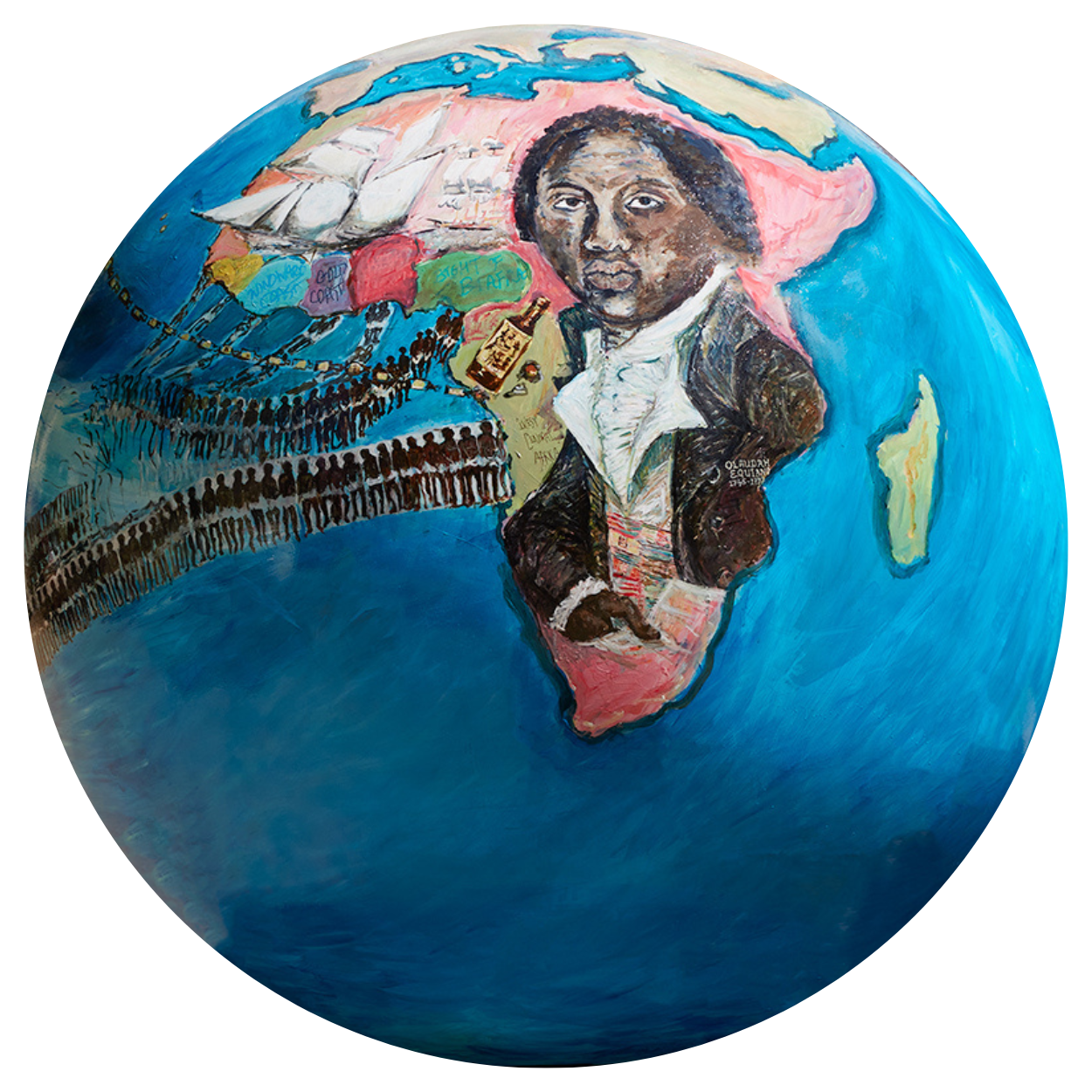
| What3Words: Leap.Began.Score |
Lucy’s design responds to the theme ‘The Reality of Being Enslaved’, which makes real the experience of those people who were enslaved, from their capture, captivity and voyage to lives and deaths enslaved in different contexts, places and generations.
In response to the theme, I found many narratives told by former enslaved people, mostly from the United States, although many travelled to England on lecture tours, often sponsored by abolitionists or their congregations. I have concentrated here on narratives available in the English language.
Many had taught themselves to read and write, although some of the narratives were written by fellow abolitionists; Ellen Craft's narrative was incorporated into her husband's and Nat Turner did not live to write, or dictate his tale, but it is well recorded. Hence the title In Their Own Words (Mostly).
The faces I sourced and depicted on the globe – many from a swollen North America; Mary Prince in Bermuda: Olaudah Equiano in Africa - have etched in them the memory of slavery. Beneath Olaudah's western garb a hint of the strip weave patterns of the Eboe region he was kidnapped from suggest the cloth he might once have expected to be adorned with.
It is from these faces I have drawn my inspiration and from their narratives I have learned about the conditions in which they were kept. Cuba and the West Indies are seen here as sharks consuming an endless chain of enslaved people. Imported gunpowder explodes and bottles of rum pour into the heart of Africa to finance the wars which perpetuated the trade in enslaved people.
South America I filled with the work of the unnamed enslaved, and the triangular trade routes I have filled with depictions of the infamous cargo of enslaved African people, the colonial imports of raw materials gathered and mined by these people, and the products that were manufactured – the colonial exports. The colonial appetite for the profits emanating from this practise resulted in the racialisation of slavery. My process aims to help reinstate these people's position in our history.
A Tottenham based multimedia artist currently largely working in acrylics to commission on commemorative portraits. Lucy has exhibited solo and in groups locally, nationally and internationally in galleries, temporary exhibition spaces and public outdoor spaces. Lucy is also a writer and actor.
Lucy’s design responds to the theme ‘The Reality of Being Enslaved’, which makes real the experience of those people who were enslaved, from their capture, captivity and voyage to lives and deaths enslaved in different contexts, places and generations.
In response to the theme, I found many narratives told by former enslaved people, mostly from the United States, although many travelled to England on lecture tours, often sponsored by abolitionists or their congregations. I have concentrated here on narratives available in the English language.
Many had taught themselves to read and write, although some of the narratives were written by fellow abolitionists; Ellen Craft's narrative was incorporated into her husband's and Nat Turner did not live to write, or dictate his tale, but it is well recorded. Hence the title In Their Own Words (Mostly).
The faces I sourced and depicted on the globe – many from a swollen North America; Mary Prince in Bermuda: Olaudah Equiano in Africa - have etched in them the memory of slavery. Beneath Olaudah's western garb a hint of the strip weave patterns of the Eboe region he was kidnapped from suggest the cloth he might once have expected to be adorned with.
It is from these faces I have drawn my inspiration and from their narratives I have learned about the conditions in which they were kept. Cuba and the West Indies are seen here as sharks consuming an endless chain of enslaved people. Imported gunpowder explodes and bottles of rum pour into the heart of Africa to finance the wars which perpetuated the trade in enslaved people.
South America I filled with the work of the unnamed enslaved, and the triangular trade routes I have filled with depictions of the infamous cargo of enslaved African people, the colonial imports of raw materials gathered and mined by these people, and the products that were manufactured – the colonial exports. The colonial appetite for the profits emanating from this practise resulted in the racialisation of slavery. My process aims to help reinstate these people's position in our history.
A Tottenham based multimedia artist currently largely working in acrylics to commission on commemorative portraits. Lucy has exhibited solo and in groups locally, nationally and internationally in galleries, temporary exhibition spaces and public outdoor spaces. Lucy is also a writer and actor.

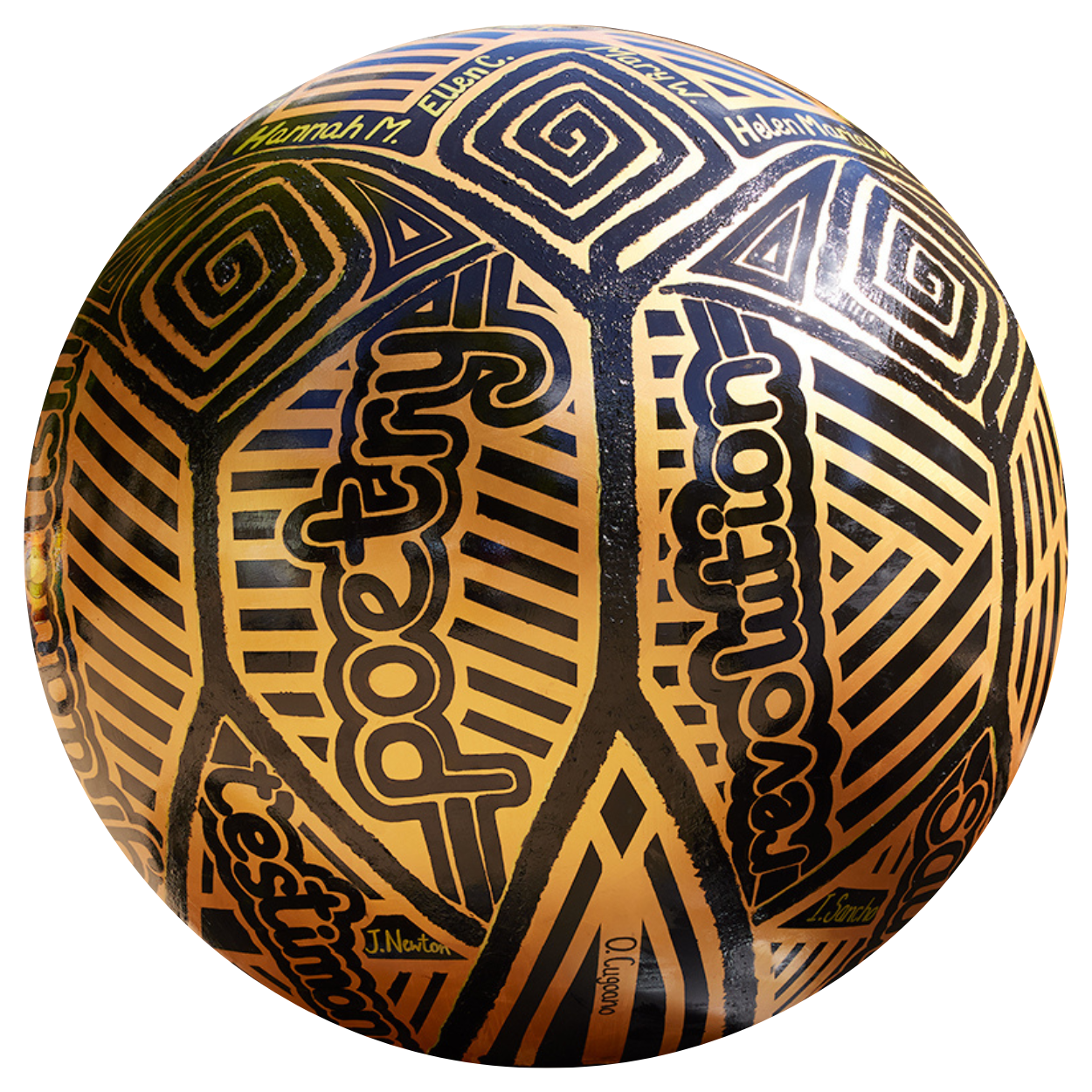
| What3Words: nation.trade.bond |
Andrea's design responds to the theme ‘Abolition & Emancipation’, which shares the story of the campaign for abolition, its key events, heroes and allies. It also lays bare the full, messy motivations and process of abolition, which were not as pure as often represented.
I loved designing my cornrow inspired globe; I have always marvelled at the intricate nature and artistry of cornrows, and the skill and patience of those who create them.
Rise Up reflects my penchant for line-doodles and pattern, by celebrating the creativity, initiative, and traditions of African people. It explores key events in the journey toward emancipation, paying tribute to abolitionists, and in particular the role played by female campaigners who themselves were ‘prisoners of gender’.
The central figures are symbolic of individuals rising up to campaign for abolition, as well as Africans later celebrating their emancipation. The contrasting gold background symbolises the financial gains associated with the trade in enslaved Africans. I have also woven words into the design that are associated with Abolition and Emancipation, together with the names of abolitionists and campaigners – female and male – some of whom are relatively unknown.
In addition, Rise Up recognises that hair is a huge part of a Black individual’s identity – black hair is Black history. Pictorial evidence of cornrows dates back to 3000 BC; African warriors and kings sported them in the early nineteenth century; and, in many African societies, braid patterns and hairstyles communicate a person’s community, age, marital status, wealth, power, social position and religion.
The heads of many enslaved people were shaved - ostensibly for sanitary reasons – but also to distance them from their own culture and identity. Many brave individuals adopted cornrows as an act of rebellion and resistance. Cornrows were a secure and secret way to communicate to other enslaved people; if they wanted to escape, women would braid a style called ‘departes’, whereas other patterns took the form of maps, depicting escape routes from plantations and captors. In addition, gold coins and seeds were ingeniously woven into cornrows for safe keeping, to aid survival following escape.
Originally from Suffolk, I’ve lived in Scotland – currently just outside Glasgow – for over 30 years. I am a Mum of 3 (and 3 dogs). I have ‘doodled’ all my life but I wasn’t allowed to pursue this passion for creativity at school.
Having sketched pictures for family and friends and employing my creative skills when designing training documentation in the corporate world, I got my first ‘big break’ in 2014 as I painted a ‘Wild in Art’ Clydesdale horse (Gambit) as part of Hamilton’s ‘Ready, Steady, Gallop’ trail. This was the first time I’d used acrylic paints – apart from painting walls – and I was ‘hooked’. I created my intricate line design freehand, and with brushes only. I painted a lion (Summer Breeze) for ‘Pride of Paisley’and Patchula the giraffe for Hamilton’s ‘Big Stampede’. (This was a simpler patchwork design inspired by the amazing skin of a giraffe and my love of pattern/nature.) As part of this trail I also worked with a local primary school to paint a baby hippo called Buttons.
In addition, I have had designs shortlisted for other Wild in Art trails, held an art exhibition, and undertaken various commissions. I also painted ‘dementia friendly’ art for the nursing home where my late Mum was living.
Acrylics are my favourite medium but during lockdown I taught myself to use watercolour paints. I am, in fact, completely self-taught when it comes to producing art. I love pattern (lines and dots) and I take inspiration from nature and aboriginal art. As a huge dog and animal lover, I enjoy sketching people’s pets and my first watercolour was a friend’s dog. I love using art to tell a story and make people happy, and I really like the collaborative nature of Wild in Art’s trails.
Andrea's design responds to the theme ‘Abolition & Emancipation’, which shares the story of the campaign for abolition, its key events, heroes and allies. It also lays bare the full, messy motivations and process of abolition, which were not as pure as often represented.
I loved designing my cornrow inspired globe; I have always marvelled at the intricate nature and artistry of cornrows, and the skill and patience of those who create them.
Rise Up reflects my penchant for line-doodles and pattern, by celebrating the creativity, initiative, and traditions of African people. It explores key events in the journey toward emancipation, paying tribute to abolitionists, and in particular the role played by female campaigners who themselves were ‘prisoners of gender’.
The central figures are symbolic of individuals rising up to campaign for abolition, as well as Africans later celebrating their emancipation. The contrasting gold background symbolises the financial gains associated with the trade in enslaved Africans. I have also woven words into the design that are associated with Abolition and Emancipation, together with the names of abolitionists and campaigners – female and male – some of whom are relatively unknown.
In addition, Rise Up recognises that hair is a huge part of a Black individual’s identity – black hair is Black history. Pictorial evidence of cornrows dates back to 3000 BC; African warriors and kings sported them in the early nineteenth century; and, in many African societies, braid patterns and hairstyles communicate a person’s community, age, marital status, wealth, power, social position and religion.
The heads of many enslaved people were shaved - ostensibly for sanitary reasons – but also to distance them from their own culture and identity. Many brave individuals adopted cornrows as an act of rebellion and resistance. Cornrows were a secure and secret way to communicate to other enslaved people; if they wanted to escape, women would braid a style called ‘departes’, whereas other patterns took the form of maps, depicting escape routes from plantations and captors. In addition, gold coins and seeds were ingeniously woven into cornrows for safe keeping, to aid survival following escape.
Originally from Suffolk, I’ve lived in Scotland – currently just outside Glasgow – for over 30 years. I am a Mum of 3 (and 3 dogs). I have ‘doodled’ all my life but I wasn’t allowed to pursue this passion for creativity at school.
Having sketched pictures for family and friends and employing my creative skills when designing training documentation in the corporate world, I got my first ‘big break’ in 2014 as I painted a ‘Wild in Art’ Clydesdale horse (Gambit) as part of Hamilton’s ‘Ready, Steady, Gallop’ trail. This was the first time I’d used acrylic paints – apart from painting walls – and I was ‘hooked’. I created my intricate line design freehand, and with brushes only. I painted a lion (Summer Breeze) for ‘Pride of Paisley’and Patchula the giraffe for Hamilton’s ‘Big Stampede’. (This was a simpler patchwork design inspired by the amazing skin of a giraffe and my love of pattern/nature.) As part of this trail I also worked with a local primary school to paint a baby hippo called Buttons.
In addition, I have had designs shortlisted for other Wild in Art trails, held an art exhibition, and undertaken various commissions. I also painted ‘dementia friendly’ art for the nursing home where my late Mum was living.
Acrylics are my favourite medium but during lockdown I taught myself to use watercolour paints. I am, in fact, completely self-taught when it comes to producing art. I love pattern (lines and dots) and I take inspiration from nature and aboriginal art. As a huge dog and animal lover, I enjoy sketching people’s pets and my first watercolour was a friend’s dog. I love using art to tell a story and make people happy, and I really like the collaborative nature of Wild in Art’s trails.

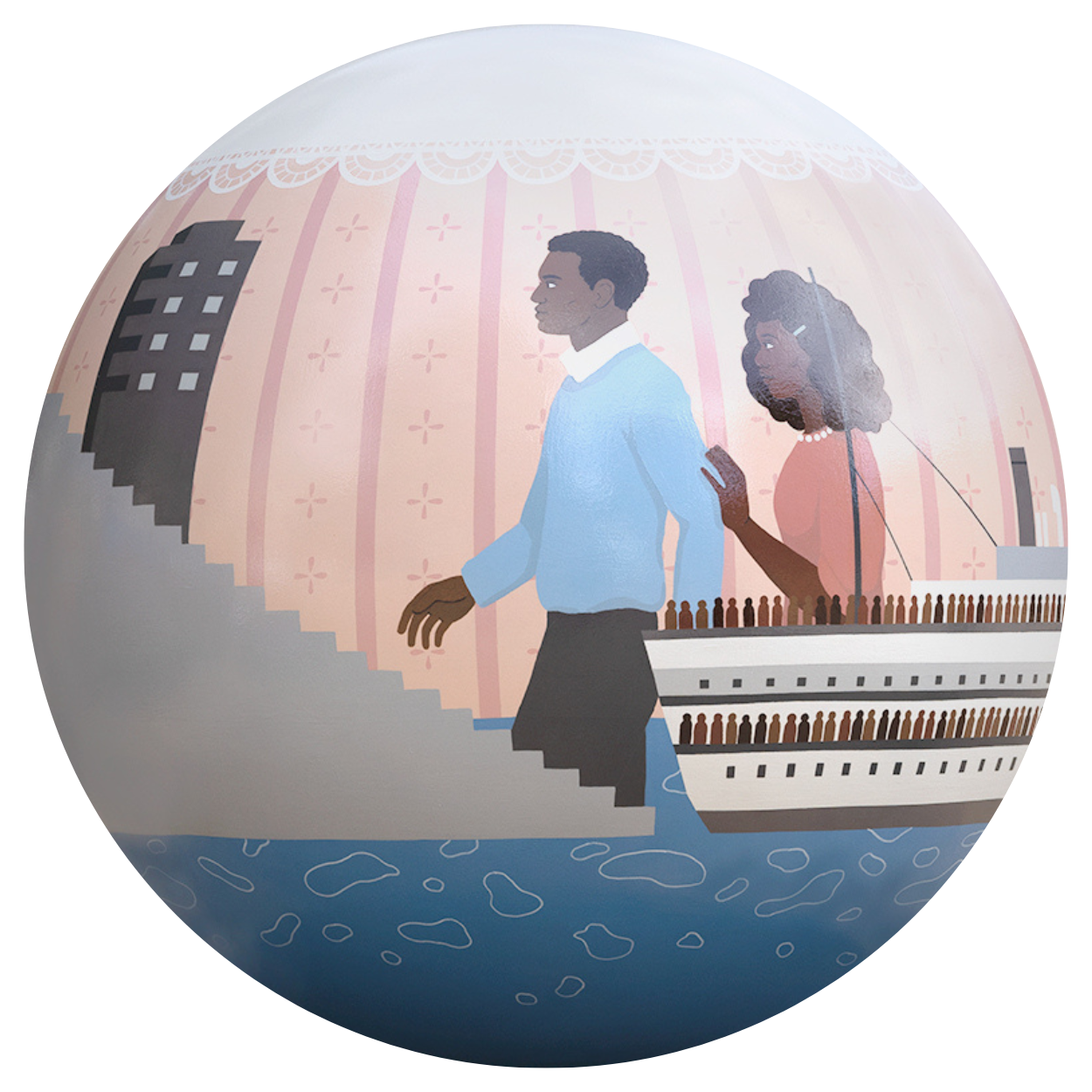
| What3Words: going.wonderfully.ties |
Nadia’s design responds to the theme ‘A Complex Triangle’, which explores the complexity of Britain’s relationship with Africa, the Americas and the Caribbean across generations, and the legacy of the Transatlantic Trade in Enslaved Africans on the UK’s role and reputation in the world.
Nadia Akingbule is an illustrator from London, working predominantly with themes relating to minority representation and activism. Alongside colourful editorial illustration, she specialises in portraiture, often referencing her experience as a person of dual heritage in her practice. Nadia’s work is diverse in content and context, spanning across workshops, branding and publication design, as well as editorial, commercial and book illustration.
Nadia’s design responds to the theme ‘A Complex Triangle’, which explores the complexity of Britain’s relationship with Africa, the Americas and the Caribbean across generations, and the legacy of the Transatlantic Trade in Enslaved Africans on the UK’s role and reputation in the world.
Nadia Akingbule is an illustrator from London, working predominantly with themes relating to minority representation and activism. Alongside colourful editorial illustration, she specialises in portraiture, often referencing her experience as a person of dual heritage in her practice. Nadia’s work is diverse in content and context, spanning across workshops, branding and publication design, as well as editorial, commercial and book illustration.

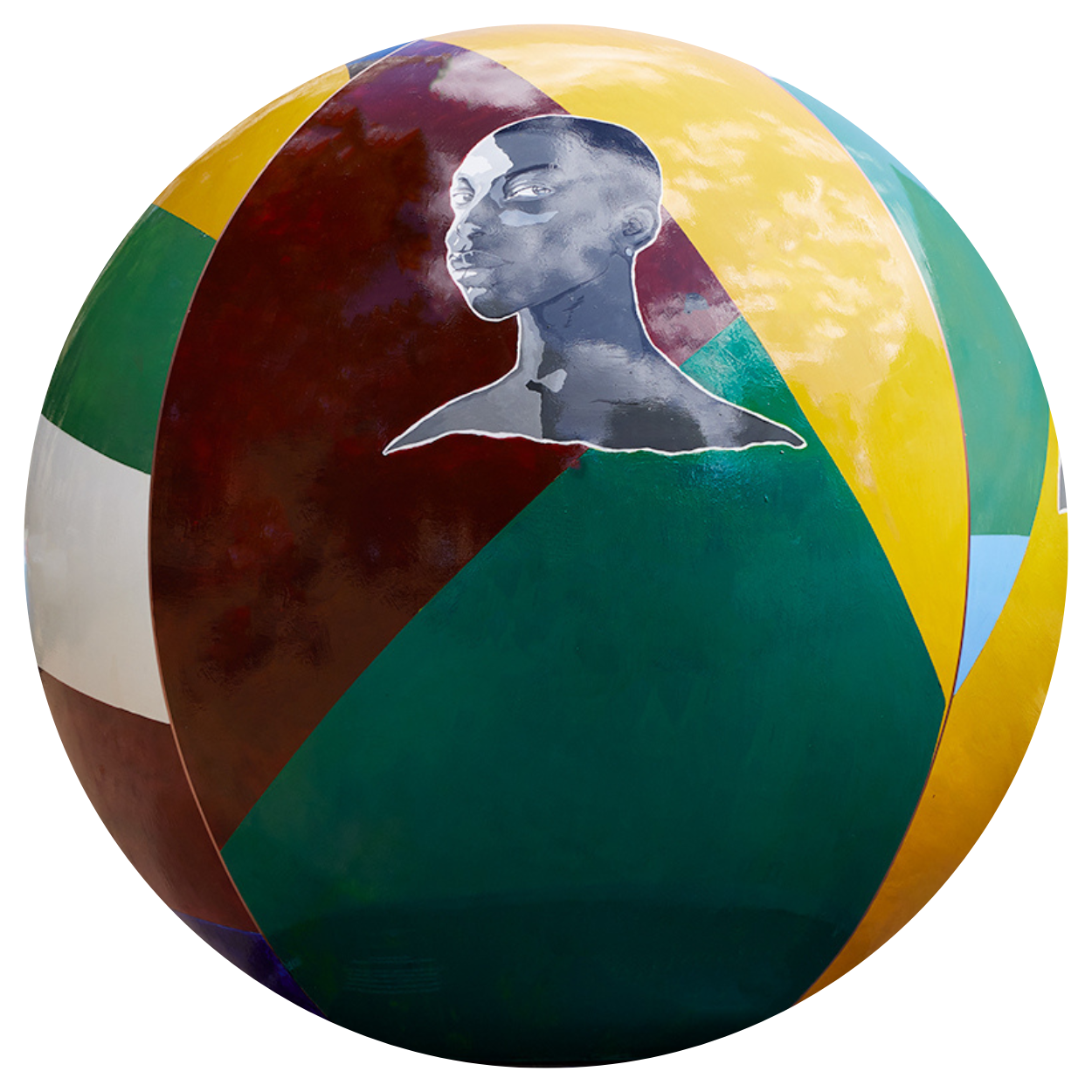
| What3Words: logo.aims.award |
The work of making racial justice a reality must be rooted in community – in our individual and collective experiences, hopes and contributions. Natasha’s design was created in response to dialogue and workshops with local communities.
Movers of the Past, Shakers of Tomorrow is inspired by conversations I had with community groups in the City of London. We spoke about people of colour who are working towards racial justice and shaking up the status quo in our society.
Two names that were mentioned were Marcus Rashford, for his humanitarian work against child poverty and hunger, and Micheala Cole for being unapologetically herself and advocating for LGBTQ rights. In addition to this, two more names were given for people who helped to shape our world and tirelessly fought for racial justice, Nelson Mandela and Maya Angelou.
I decided to section the globe into four and paint their portraits in black and white, set against the colourful background of the native flags of the painted individuals, rather than the flags of the countries in which they now reside. Furthermore, I took the approach of colour blocking the flags in an abstract way, which is less prominent but still powerful enough to honour their roots.
Natasha Muluswela b. 1995 is a self-taught, Zimbabwean-born visual artist based in the United Kingdom. Muluswela studied French and Spanish at Nottingham Trent University, graduating in 2017. Her art centers around body positivity, exploring what it means to be deemed as beautiful in our society. She explores skin conditions such as vitiligo, stretch marks and ageism. Conditions which in some parts of the world are seen as shameful or have stigma tied to them.
Muluswela wants to portray how society can deem these as imperfections. Yet to her, these unique markings are a natural part of being human. Additionally, Muluswela’s works explore the human condition of migration and what it means for Africans to take-up space away from the Diaspora. Through the use of symbolism through figures, she sheds light on the deep-rooted realities of racism, discrimination and marginalisation in a post-colonial oppressive system. Challenging her views on not only Africa’s political past and present but its potential and future through art. The subject matter of each artwork determines the materials used in the piece.
The work of making racial justice a reality must be rooted in community – in our individual and collective experiences, hopes and contributions. Natasha’s design was created in response to dialogue and workshops with local communities.
Movers of the Past, Shakers of Tomorrow is inspired by conversations I had with community groups in the City of London. We spoke about people of colour who are working towards racial justice and shaking up the status quo in our society.
Two names that were mentioned were Marcus Rashford, for his humanitarian work against child poverty and hunger, and Micheala Cole for being unapologetically herself and advocating for LGBTQ rights. In addition to this, two more names were given for people who helped to shape our world and tirelessly fought for racial justice, Nelson Mandela and Maya Angelou.
I decided to section the globe into four and paint their portraits in black and white, set against the colourful background of the native flags of the painted individuals, rather than the flags of the countries in which they now reside. Furthermore, I took the approach of colour blocking the flags in an abstract way, which is less prominent but still powerful enough to honour their roots.
Natasha Muluswela b. 1995 is a self-taught, Zimbabwean-born visual artist based in the United Kingdom. Muluswela studied French and Spanish at Nottingham Trent University, graduating in 2017. Her art centers around body positivity, exploring what it means to be deemed as beautiful in our society. She explores skin conditions such as vitiligo, stretch marks and ageism. Conditions which in some parts of the world are seen as shameful or have stigma tied to them.
Muluswela wants to portray how society can deem these as imperfections. Yet to her, these unique markings are a natural part of being human. Additionally, Muluswela’s works explore the human condition of migration and what it means for Africans to take-up space away from the Diaspora. Through the use of symbolism through figures, she sheds light on the deep-rooted realities of racism, discrimination and marginalisation in a post-colonial oppressive system. Challenging her views on not only Africa’s political past and present but its potential and future through art. The subject matter of each artwork determines the materials used in the piece.

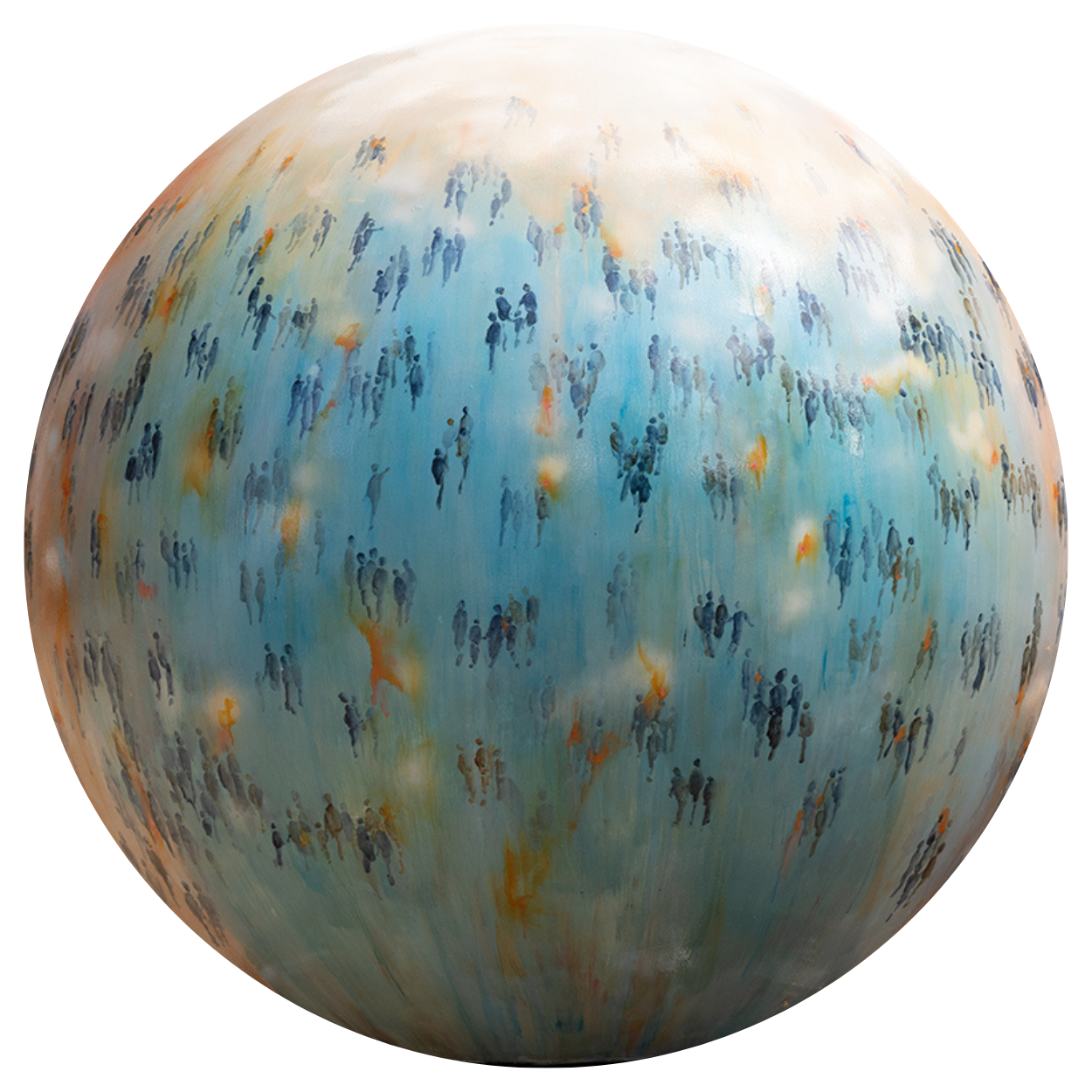
| What 3 Words: code.froth.junior |
Suchi's design responds to the theme ‘Reimagine the Future’, which gives us free rein to imagine the society we can create when we have a full understanding of our shared history; the place the UK can hold in the world when it acknowledges its past; and who we can be as people and a country when we give full dignity to all.
I chose the theme Reimagine The Future because I feel the world has become too fragmented and our differences too deep-rooted. It feels like it is time to press the reset button and begin to celebrate our diversity and work on potential possibilities through creative collaborations. History has shaped each of our lives and it is very important to be aware of our histories. Experiences have shown that the ‘an eye for an eye and a tooth for a tooth’ approach only deepens and worsens these divisions and harms. What is instead possible is channelling our energies into more positively shaping the future.
In my depiction of a Reimagined Future, the globe is represented through the course of a complete day, from dawn to nightfall, narrating the ups and downs that every individual encounters on their journey. In this reimagined world, each person is more grounded, clear thinking and wise.
The figures are illustrated with a stroke of acrylic paint suggested by rapid brush marks, forming crowds of people from every nationality, religion, colour, age and gender. The images of individuals are silhouetted against the bright light they hold within that supports each one to be kind, considerate, compassionate and tolerant towards themselves and to those around them, leading to a radiance that dissolves any intolerance to differences. The luminosity of each mind sets the globe aglow, restoring the oneness of spirit as global citizens.
To quote Desmond Tutu, ‘Do your little bit of good where you are; it's those little bits of good put together that overwhelm the world.’
Suchi Chidambaram is a painter, born and raised in Southern India. She moved to London in 1998 and works from her studio in Acton. Mainly self-taught, her work focuses on narrating her experience of a place and its people through rapid palette knife marks using oil paints. Her interpretations are not painted in situ but from memory, allowing fragments of visual data to mingle with her subjective and emotional responses. The resulting work varies between figuration and abstraction. In 2021, Suchi’s work Parallel Conversations was selected to be part of the I Matter exhibition curated by Lincolnshire-based Olu Taiwo, who sought work by ethnic minority artists themed around the title I Matter and all its iterations. Suchi has been an ACAVA artist since 2008. She held her first solo exhibition at the Nehru Centre, London in 2006 and has since participated in numerous exhibitions across England as well as India, Italy, Bahrain, UAE and Oman.
Suchi's design responds to the theme ‘Reimagine the Future’, which gives us free rein to imagine the society we can create when we have a full understanding of our shared history; the place the UK can hold in the world when it acknowledges its past; and who we can be as people and a country when we give full dignity to all.
I chose the theme Reimagine The Future because I feel the world has become too fragmented and our differences too deep-rooted. It feels like it is time to press the reset button and begin to celebrate our diversity and work on potential possibilities through creative collaborations. History has shaped each of our lives and it is very important to be aware of our histories. Experiences have shown that the ‘an eye for an eye and a tooth for a tooth’ approach only deepens and worsens these divisions and harms. What is instead possible is channelling our energies into more positively shaping the future.
In my depiction of a Reimagined Future, the globe is represented through the course of a complete day, from dawn to nightfall, narrating the ups and downs that every individual encounters on their journey. In this reimagined world, each person is more grounded, clear thinking and wise.
The figures are illustrated with a stroke of acrylic paint suggested by rapid brush marks, forming crowds of people from every nationality, religion, colour, age and gender. The images of individuals are silhouetted against the bright light they hold within that supports each one to be kind, considerate, compassionate and tolerant towards themselves and to those around them, leading to a radiance that dissolves any intolerance to differences. The luminosity of each mind sets the globe aglow, restoring the oneness of spirit as global citizens.
To quote Desmond Tutu, ‘Do your little bit of good where you are; it's those little bits of good put together that overwhelm the world.’
Suchi Chidambaram is a painter, born and raised in Southern India. She moved to London in 1998 and works from her studio in Acton. Mainly self-taught, her work focuses on narrating her experience of a place and its people through rapid palette knife marks using oil paints. Her interpretations are not painted in situ but from memory, allowing fragments of visual data to mingle with her subjective and emotional responses. The resulting work varies between figuration and abstraction. In 2021, Suchi’s work Parallel Conversations was selected to be part of the I Matter exhibition curated by Lincolnshire-based Olu Taiwo, who sought work by ethnic minority artists themed around the title I Matter and all its iterations. Suchi has been an ACAVA artist since 2008. She held her first solo exhibition at the Nehru Centre, London in 2006 and has since participated in numerous exhibitions across England as well as India, Italy, Bahrain, UAE and Oman.

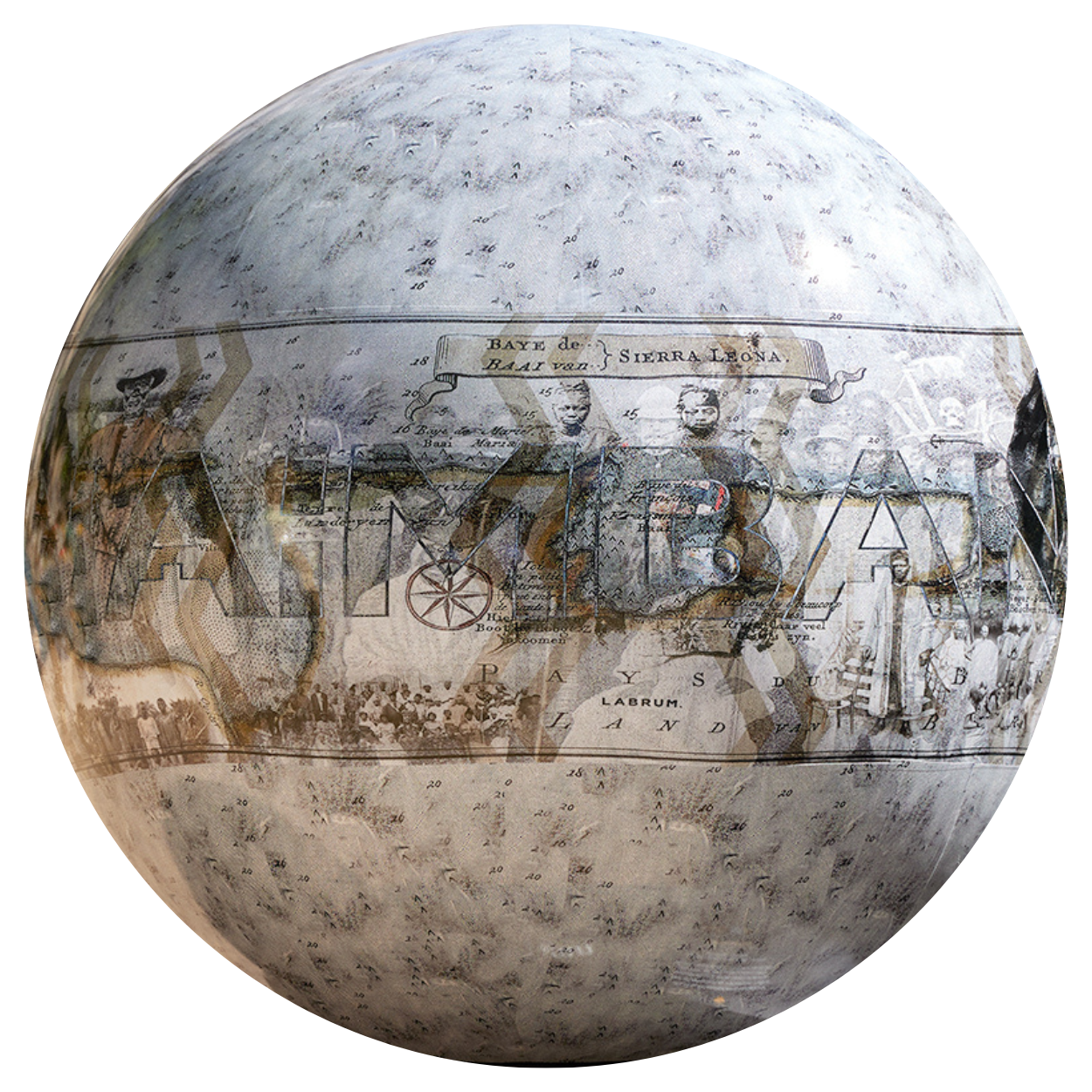
| What 3 Words: flap.gums.slimy |
Foday's design responds to the theme ‘Still We Rise’, which recognises and honours the enslaved and their descendants who resisted, who succeeded, and who broke new ground. We honour the well-known and celebrated, and shed light on untold legacies and events.
The theme I decided to focus on is ‘Still We Rise’ that honours the enslaved and their descendants who resisted and broke new ground. This resonates with Labrum that features untold West African stories through the garments we design and make.
I dedicated my AW21 collection to the heroes of “St. Giles Blackbirds” that celebrated a section of the black community comprising of sailors, soldiers and former slaves that settled in England in the late 1700’s who soon found themselves poor, dispossessed and living within the St Giles-in-the-fields area of London. Dubbed the ‘black poor’ they were dispassionately transported to Sierra Leone following difficulty finding the solace that London once promised. The group are symbolic of a familiar history and repeated tale: Black people who are discarded as soon as they no longer prove useful but still persisted.
The artwork I decided to use for the globe, was derived from my SS20 inspiration ‘The Black Prince Naimbana’, real name Prince John Frederic. One of three sons born to King Naimbana – the last traditional Temne ruler of Koya, in what is now Sierra Leone – Prince Naimbana was sent to England to study Protestantism in 1791, as a result of the close friendship between his father and the British abolitionist Granville Sharp. Present at the House of Commons during a debate on the trade in enslaved Africans, the prince gave his famous delivery:
“If a man should rob me of my money, I can forgive him; if a man should shoot at me I can forgive him; if a man should sell me and all my family to a slave ship, so that we should pass all the rest of our lives in slavery in the West Indies, I can forgive him; but if a man takes away the character of the people of my country, I never can forgive him.”
I used imagery of the story to create the collage for the print layered with some zig-zag patterns that I created for SS22, Sound of Movement collection. I came across a lot of zig-zag motifs in my research, which were featured in many West African artifacts and masks such as the Bamana “Zig-Zag” Figure, Mali. I wanted to interweave the ‘The Black Prince Naimbana’ and ‘Sound of Movement’ design elements to symbolize the idea of persistent merging cultures that helps us to Reimagine our Past, Present and Future.
Foday was born in Freetown, Sierra Leone, and grew up in both Cyprus and London. Foday is a Menswear designer and Creative Director whose practice exists between the intersection of Fashion, Culture and Art.
Having graduated from Nottingham Trent University, he went on to work for DKNY and Nike before launching his brand LABRUM London in 2015. After a stint at LCF and then learning pattern cutting, Foday’s desire to master the craft of design took him on a journey of exploration where he learned many different ways to develop and create garments. He has incorporated techniques handed down generation by generation for centuries into the LABRUM collections, fusing some traditional silhouettes such as the agbada shirt with classic British tailoring to create styles that are signature to Labrum and totally unique to the brand.
Foday’s ambition for LABRUM is to push a narrative of black joy to the forefront of the media and the public eye which no brand has done previously, as such his focus is predominantly on black history and West Africa. He is driven to change the perception of black history and to emphasise the amazing people who have contributed to creating the world that we all live in.
Stories brings us together. Foday believes that that when people lose their voice something inside of them dies and his vision is for LABRUM to be the vehicle to bring those stories to life. For LABRUM, while Foday is passionate about making incredible garments; without the presence of these stories, the brand and each collection cannot exist.
Foday's design responds to the theme ‘Still We Rise’, which recognises and honours the enslaved and their descendants who resisted, who succeeded, and who broke new ground. We honour the well-known and celebrated, and shed light on untold legacies and events.
The theme I decided to focus on is ‘Still We Rise’ that honours the enslaved and their descendants who resisted and broke new ground. This resonates with Labrum that features untold West African stories through the garments we design and make.
I dedicated my AW21 collection to the heroes of “St. Giles Blackbirds” that celebrated a section of the black community comprising of sailors, soldiers and former slaves that settled in England in the late 1700’s who soon found themselves poor, dispossessed and living within the St Giles-in-the-fields area of London. Dubbed the ‘black poor’ they were dispassionately transported to Sierra Leone following difficulty finding the solace that London once promised. The group are symbolic of a familiar history and repeated tale: Black people who are discarded as soon as they no longer prove useful but still persisted.
The artwork I decided to use for the globe, was derived from my SS20 inspiration ‘The Black Prince Naimbana’, real name Prince John Frederic. One of three sons born to King Naimbana – the last traditional Temne ruler of Koya, in what is now Sierra Leone – Prince Naimbana was sent to England to study Protestantism in 1791, as a result of the close friendship between his father and the British abolitionist Granville Sharp. Present at the House of Commons during a debate on the trade in enslaved Africans, the prince gave his famous delivery:
“If a man should rob me of my money, I can forgive him; if a man should shoot at me I can forgive him; if a man should sell me and all my family to a slave ship, so that we should pass all the rest of our lives in slavery in the West Indies, I can forgive him; but if a man takes away the character of the people of my country, I never can forgive him.”
I used imagery of the story to create the collage for the print layered with some zig-zag patterns that I created for SS22, Sound of Movement collection. I came across a lot of zig-zag motifs in my research, which were featured in many West African artifacts and masks such as the Bamana “Zig-Zag” Figure, Mali. I wanted to interweave the ‘The Black Prince Naimbana’ and ‘Sound of Movement’ design elements to symbolize the idea of persistent merging cultures that helps us to Reimagine our Past, Present and Future.
Foday was born in Freetown, Sierra Leone, and grew up in both Cyprus and London. Foday is a Menswear designer and Creative Director whose practice exists between the intersection of Fashion, Culture and Art.
Having graduated from Nottingham Trent University, he went on to work for DKNY and Nike before launching his brand LABRUM London in 2015. After a stint at LCF and then learning pattern cutting, Foday’s desire to master the craft of design took him on a journey of exploration where he learned many different ways to develop and create garments. He has incorporated techniques handed down generation by generation for centuries into the LABRUM collections, fusing some traditional silhouettes such as the agbada shirt with classic British tailoring to create styles that are signature to Labrum and totally unique to the brand.
Foday’s ambition for LABRUM is to push a narrative of black joy to the forefront of the media and the public eye which no brand has done previously, as such his focus is predominantly on black history and West Africa. He is driven to change the perception of black history and to emphasise the amazing people who have contributed to creating the world that we all live in.
Stories brings us together. Foday believes that that when people lose their voice something inside of them dies and his vision is for LABRUM to be the vehicle to bring those stories to life. For LABRUM, while Foday is passionate about making incredible garments; without the presence of these stories, the brand and each collection cannot exist.

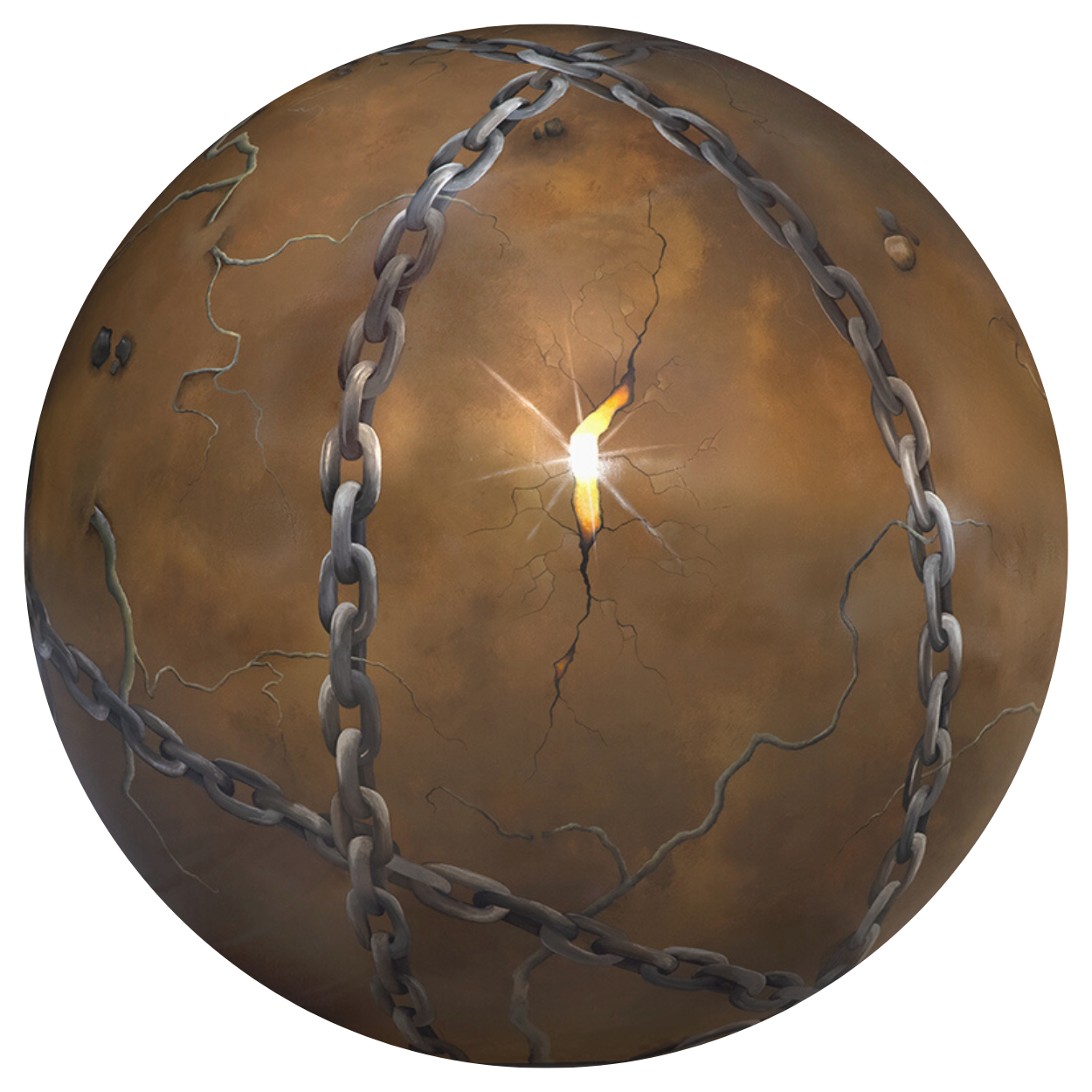
| What 3 Words: sadly.carbon.towns |
Gail's design responds to the theme ‘Echoes in the Present’, which focuses on how the Transatlantic Trade in Enslaved Africans and its related history has present day negative consequences: systemic inequalities and injustice; entrenched racism and prejudices; and the generational echoes which have traumatic physical, behavioural, psychological and material impact.
My design came into being during the course of my studies, when I became aware of the extent to which institutional racism persists in the UK, and more specifically, its prevalence within the criminal justice system. I wanted the globe to depict the weight of racial injustice by creating a heavy earth and stone base on which to build a narrative.
Circling this barren foundation, the chains contribute to the weight of oppression, and represent continued restriction, restraint and subjugation. The roots serve two purposes, depicting both cultural roots and heritage, but also deep-rooted racism, branching through the earth to hold the chains in place. While the origins of the design idea came from my bewilderment that discrimination continues to occur in the twenty-first century, I did not want my design to be entirely dispiriting and bleak.
By illuminating entrenched racial injustice – represented by the brightness shining through cracked earth – awareness will increase and new ground will be broken.
Gail has been a self-employed artist for around 10 years, but has enjoyed various aspects of art for most of her life. The bulk of her workload is split between painting for several galleries, and commissions which have been wide and varied in theme from album cover art to commercial illustration. She has had paintings commissioned from clients in the USA, Australia and New Zealand as well as the UK. A great deal of her work is narrative in style, as she believes art should be more than just media on a support – there are always visual stories to tell.
Gail's design responds to the theme ‘Echoes in the Present’, which focuses on how the Transatlantic Trade in Enslaved Africans and its related history has present day negative consequences: systemic inequalities and injustice; entrenched racism and prejudices; and the generational echoes which have traumatic physical, behavioural, psychological and material impact.
My design came into being during the course of my studies, when I became aware of the extent to which institutional racism persists in the UK, and more specifically, its prevalence within the criminal justice system. I wanted the globe to depict the weight of racial injustice by creating a heavy earth and stone base on which to build a narrative.
Circling this barren foundation, the chains contribute to the weight of oppression, and represent continued restriction, restraint and subjugation. The roots serve two purposes, depicting both cultural roots and heritage, but also deep-rooted racism, branching through the earth to hold the chains in place. While the origins of the design idea came from my bewilderment that discrimination continues to occur in the twenty-first century, I did not want my design to be entirely dispiriting and bleak.
By illuminating entrenched racial injustice – represented by the brightness shining through cracked earth – awareness will increase and new ground will be broken.
Gail has been a self-employed artist for around 10 years, but has enjoyed various aspects of art for most of her life. The bulk of her workload is split between painting for several galleries, and commissions which have been wide and varied in theme from album cover art to commercial illustration. She has had paintings commissioned from clients in the USA, Australia and New Zealand as well as the UK. A great deal of her work is narrative in style, as she believes art should be more than just media on a support – there are always visual stories to tell.


| Hackney Bridge |
The work of making racial justice a reality must be rooted in community – in our individual and collective experiences, hopes and contributions. Olivia’s design was created in response to dialogue and workshops with local communities.
Alongside the community workshop for this globe I engaged in archival research through the Hackney Archives and Eastend Womens library and The Bishopsgate Institute. I was inspired by activism in Hackney over the era and wanted to reflect this boldness and staying power through my design.
I learned about the women's labour strike at the Rego and Polikoff clothing factory and it tied in with something a Hackney resident told me in the workshop about a Hackney tenants group that used to meet in the old cinema. The 600 seamstresses were campaigning for better pay, which links to today's strikes for living wages.
Then I looked into Lesbian squats and communal homes in London Fields in the 70's and 80's. By the late 1970's, London Fields became an oasis of lesbian communes, with estimates of over fifty women-only households. Some streets even had continuous terraces of women-only squats. The majority of these women were lesbians: living together, sharing childcare, and organising politically. The squats weren’t only for shared living and many also served as venues for poetry, photography, writing and other cultural activities.
Then I looked into the 1980's protests and how the people of Hackney called for systemic change, which linked to the recent Child Q demonstrations held outside Stoke Newington police station. The people of Hackney are really active citizens and I wanted to celebrate this in my globe design.
I also did research into the ethnic demographics and incorporated colours from the flags of the Caribbean and West Africa into my design. I was inspired by the history of 'staying power', a Caribbean colloquial term, by the communities in Hackney against gentrification so I brought this into the design using a protest poster style.
Olivia Twist is an illustrator and educator based in East London. The key threads which can be found in her work are place, the mundane and overlooked narratives. Her striking visual language comprises a myriad of esoteric layers informed by a propensity for human-centred research methodologies. As a practitioner her aims are to provide her audience with ‘the shock of the familiar’ and to trigger greater intergenerational discussion.Olivia has a strong interest in participatory design, relational aesthetics and documenting social history as it unfolds.
The work of making racial justice a reality must be rooted in community – in our individual and collective experiences, hopes and contributions. Olivia’s design was created in response to dialogue and workshops with local communities.
Alongside the community workshop for this globe I engaged in archival research through the Hackney Archives and Eastend Womens library and The Bishopsgate Institute. I was inspired by activism in Hackney over the era and wanted to reflect this boldness and staying power through my design.
I learned about the women's labour strike at the Rego and Polikoff clothing factory and it tied in with something a Hackney resident told me in the workshop about a Hackney tenants group that used to meet in the old cinema. The 600 seamstresses were campaigning for better pay, which links to today's strikes for living wages.
Then I looked into Lesbian squats and communal homes in London Fields in the 70's and 80's. By the late 1970's, London Fields became an oasis of lesbian communes, with estimates of over fifty women-only households. Some streets even had continuous terraces of women-only squats. The majority of these women were lesbians: living together, sharing childcare, and organising politically. The squats weren’t only for shared living and many also served as venues for poetry, photography, writing and other cultural activities.
Then I looked into the 1980's protests and how the people of Hackney called for systemic change, which linked to the recent Child Q demonstrations held outside Stoke Newington police station. The people of Hackney are really active citizens and I wanted to celebrate this in my globe design.
I also did research into the ethnic demographics and incorporated colours from the flags of the Caribbean and West Africa into my design. I was inspired by the history of 'staying power', a Caribbean colloquial term, by the communities in Hackney against gentrification so I brought this into the design using a protest poster style.
Olivia Twist is an illustrator and educator based in East London. The key threads which can be found in her work are place, the mundane and overlooked narratives. Her striking visual language comprises a myriad of esoteric layers informed by a propensity for human-centred research methodologies. As a practitioner her aims are to provide her audience with ‘the shock of the familiar’ and to trigger greater intergenerational discussion.Olivia has a strong interest in participatory design, relational aesthetics and documenting social history as it unfolds.

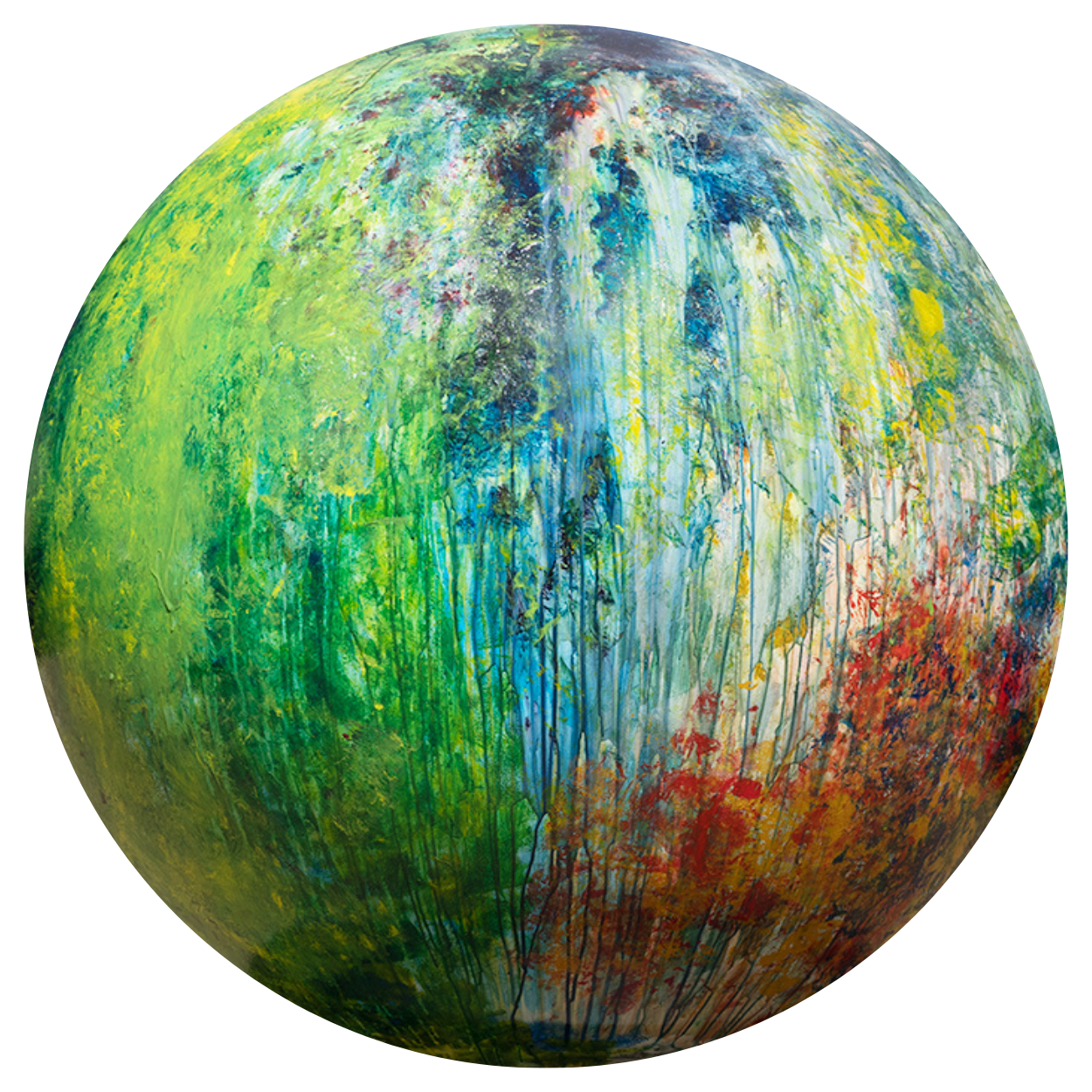
| What 3 Words: ants.gather.wings |
Winston’s design responds to the theme ‘Still We Rise’, which recognises and honours the enslaved and their descendants who resisted, who succeeded, and who broke new ground. We honour the well-known and celebrated, and shed light on untold legacies and events.
As an abstract painter, I see the world through the prism of colour, which for me is a universal language that conveys feeling, thereby evoking a consciousness of emotion. My globe expresses that freedom of expression and movement through bright colours and my technique of application.
For me, abstraction is cutting at the edge of the bone of the human experience as the faculty of the imagination is the highest order of the manifestation of one’s soul. Racism puts you in a box and therefore you can’t see what is possible. Because you can’t see what is possible you begin to accept what is given to you. It kills your imagination. I hope this globe reminds us of the power of our imaginations.
Winston Branch is a British artist originally from Saint Lucia, the sovereign island in the Caribbean Sea. He still has a home there, while maintaining a studio in California.
Winston’s design responds to the theme ‘Still We Rise’, which recognises and honours the enslaved and their descendants who resisted, who succeeded, and who broke new ground. We honour the well-known and celebrated, and shed light on untold legacies and events.
As an abstract painter, I see the world through the prism of colour, which for me is a universal language that conveys feeling, thereby evoking a consciousness of emotion. My globe expresses that freedom of expression and movement through bright colours and my technique of application.
For me, abstraction is cutting at the edge of the bone of the human experience as the faculty of the imagination is the highest order of the manifestation of one’s soul. Racism puts you in a box and therefore you can’t see what is possible. Because you can’t see what is possible you begin to accept what is given to you. It kills your imagination. I hope this globe reminds us of the power of our imaginations.
Winston Branch is a British artist originally from Saint Lucia, the sovereign island in the Caribbean Sea. He still has a home there, while maintaining a studio in California.

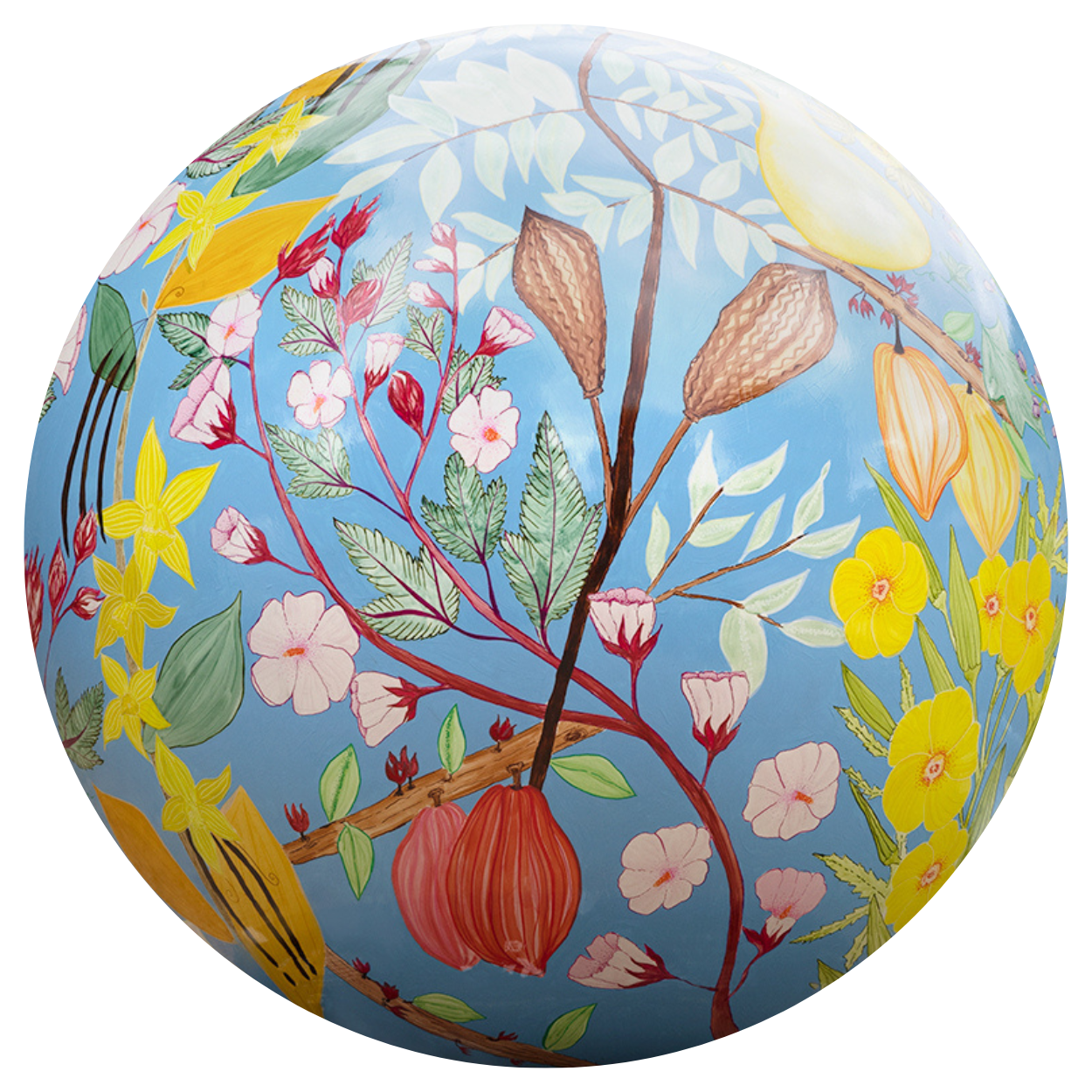
| Olympic Park at Tavern In The Park |
Sophie's design responds to the theme ‘Echoes in the Present’, which focuses on how the Transatlantic Trade in Enslaved Africans and its related history has present day negative consequences: systemic inequalities and injustice; entrenched racism and prejudices; and the generational echoes which have traumatic physical, behavioural, psychological and material impact.
My globe features plants that were once transported and cultivated by enslaved people. Included are flowers, herbs, fruits and vegetables, many of which are still grown, utilised and eaten today. Some are familiar to descendants of enslaved people, others we all may know and use without being aware of their origin. I wanted to juxtapose the idea of the beauty of nature with how it was used to exploit people.
Although now many of us have access to and enjoy the end products of these plants, for example cocoa, coffee, cotton, we may not recognise the original plants, and I wanted to explore and highlight what our enslaved ancestors would have seen when growing them. Crops such as these owe their establishment to the horticultural knowledge and practices of enslaved Africans. Others flourished due to being transported or expertly nurtured by them, often having to adapt their knowledge to wherever they were forced to migrate. They rarely, if ever, are or were recognised or compensated for their work.
The theme of my globe is essentially Survival. Whether by force – cultivated on plantations profiting the enslavers or as findings to be exploited and appropriated by scientists; by necessity – to supplement what deliberately poor diet they were provided, or to treat illness or health conditions; or by choice – in what little time and with the limited resources they had, evoking a sense of their original home or cultural identity in furniture, craft or a taste of home. Whatever the end purpose, they grew these plants to survive.
Now, it’s down to us; the choices we are afforded due to the struggles of our Black ancestors, their legacy has echoes in the present. We can decide to use natural resources ethically and responsibly. Therefore, as descendants, will we use natures bounty for evil or for good?
Sophie Mowat is the founder of Mowat&daughter – a design house specialising in woven and printed textiles and surfaces for fashion and lifestyle. Her designs are shaped by her dual heritage, blending the vibrant colours of Barbados with the flora and fauna of the British countryside. She also draws on the patterns and textures she see in daily life; on travels to different countries and visits to exhibitions. Later Sophie found a love of print and pattern design while working for suppliers for leading fashion brands and retailers. After becoming a mother in 2018 and later going freelance in 2020, she developed her own handwriting and design style. Sophie is particularly inspired by culture, history, nature and travel. She believes textile design has strong links to memory and can spark positive recall, as often the designs connect people and places we think of fondly. She designs with enthusiasm, inspiration and innovation in a world of throwaway culture, fast fashion and monotonous repetition.
Sophie's design responds to the theme ‘Echoes in the Present’, which focuses on how the Transatlantic Trade in Enslaved Africans and its related history has present day negative consequences: systemic inequalities and injustice; entrenched racism and prejudices; and the generational echoes which have traumatic physical, behavioural, psychological and material impact.
My globe features plants that were once transported and cultivated by enslaved people. Included are flowers, herbs, fruits and vegetables, many of which are still grown, utilised and eaten today. Some are familiar to descendants of enslaved people, others we all may know and use without being aware of their origin. I wanted to juxtapose the idea of the beauty of nature with how it was used to exploit people.
Although now many of us have access to and enjoy the end products of these plants, for example cocoa, coffee, cotton, we may not recognise the original plants, and I wanted to explore and highlight what our enslaved ancestors would have seen when growing them. Crops such as these owe their establishment to the horticultural knowledge and practices of enslaved Africans. Others flourished due to being transported or expertly nurtured by them, often having to adapt their knowledge to wherever they were forced to migrate. They rarely, if ever, are or were recognised or compensated for their work.
The theme of my globe is essentially Survival. Whether by force – cultivated on plantations profiting the enslavers or as findings to be exploited and appropriated by scientists; by necessity – to supplement what deliberately poor diet they were provided, or to treat illness or health conditions; or by choice – in what little time and with the limited resources they had, evoking a sense of their original home or cultural identity in furniture, craft or a taste of home. Whatever the end purpose, they grew these plants to survive.
Now, it’s down to us; the choices we are afforded due to the struggles of our Black ancestors, their legacy has echoes in the present. We can decide to use natural resources ethically and responsibly. Therefore, as descendants, will we use natures bounty for evil or for good?
Sophie Mowat is the founder of Mowat&daughter – a design house specialising in woven and printed textiles and surfaces for fashion and lifestyle. Her designs are shaped by her dual heritage, blending the vibrant colours of Barbados with the flora and fauna of the British countryside. She also draws on the patterns and textures she see in daily life; on travels to different countries and visits to exhibitions. Later Sophie found a love of print and pattern design while working for suppliers for leading fashion brands and retailers. After becoming a mother in 2018 and later going freelance in 2020, she developed her own handwriting and design style. Sophie is particularly inspired by culture, history, nature and travel. She believes textile design has strong links to memory and can spark positive recall, as often the designs connect people and places we think of fondly. She designs with enthusiasm, inspiration and innovation in a world of throwaway culture, fast fashion and monotonous repetition.

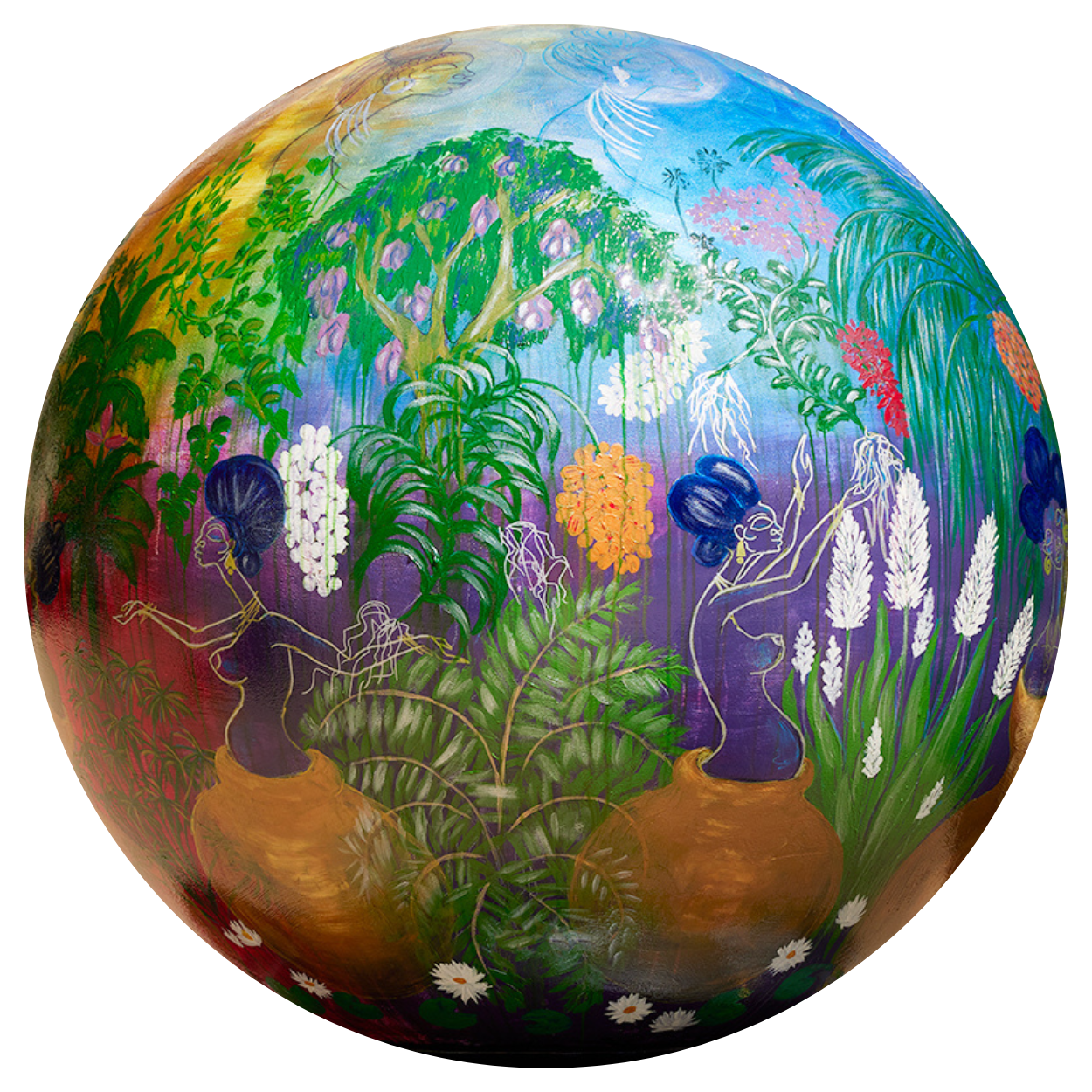
| What 3 Words: broker.achieving.pitch |
Foluso’s design responds to the theme ‘Mother Africa’, which explores the richness and reality of Africa before the Transatlantic Trade in Enslaved Africans; the impact of the Transatlantic Trade in Enslaved Africans and European colonialism on Africa; and considers and celebrates Africa’s present and future.
My desire as an artist is to reach for and always point us towards the source of things; the truth; the essential, intrinsic quality of things; of identity through the vehicle of culture and nature; both inwards and outwards; harmony. Being partly based in – and having strong connections to – Nigeria in West Africa, I see richness and abundance in remnants of the past, in the present and a bit of the future In front of me everyday. It is my reality. I have a strong desire – personally and for others – to look deeper and draw back from a great source: Mother Africa and all the hidden treasures she holds within her to reimagine and recreate a new world befitting us.
I am inspired by the Yoruba concept of the world/earth as a gourd/calabash. The calabash is a metaphor for the world and women – alluding to everything they incarnate into this earth, hold and carry which includes creation, fertility and life. The calabash has been cultivated and used for centuries; it is a fruit that has been used and recreated into almost any utilitarian, domestic, musical and ritual, mystical tool within African culture. With its journey through time, it can reveal a lot about the past and reality of Mother Africa and also her future. The calabash is a symbol of Mother Africa in which the pre-colonial historical memory of people, culture and nature is stored, conjured, recalled and reimagined.
I reimagined the world as a metaphorical calabash, filled with the abundant tropical rain forests of West Africa that sustains us; from where our cultures and way of life originate and by which we are inspired. It is a timeless utopia set in the past, elsewhere, here and there, within us, in the present and also in the future. It has just begun; everyday is new and Mother Africa is everywhere – within us, in the heavenly bodies, in the vegetation, in the custodian gourded forest spirits below; deliberating a new world, always conceiving, always pregnant and birthing new things for the greater good and lighting the path for others on a journey to find their way back.
Foluso Oguntoye's art is still life. Reflections, expressions and projections rooted in time, past/history and tradition, about Nostalgia; his longing and yearning for home and a lost, simple way of life and identity, a sort of paradise. His practice involves the integration of two different traditions and cultures with a history to re-imagine, re-contextualize and evoke visions, memories and myths of the Pre-colonial African past. It is also a celebration of the past and future as well as a mourning of the loss of a past way of life.
Foluso’s design responds to the theme ‘Mother Africa’, which explores the richness and reality of Africa before the Transatlantic Trade in Enslaved Africans; the impact of the Transatlantic Trade in Enslaved Africans and European colonialism on Africa; and considers and celebrates Africa’s present and future.
My desire as an artist is to reach for and always point us towards the source of things; the truth; the essential, intrinsic quality of things; of identity through the vehicle of culture and nature; both inwards and outwards; harmony. Being partly based in – and having strong connections to – Nigeria in West Africa, I see richness and abundance in remnants of the past, in the present and a bit of the future In front of me everyday. It is my reality. I have a strong desire – personally and for others – to look deeper and draw back from a great source: Mother Africa and all the hidden treasures she holds within her to reimagine and recreate a new world befitting us.
I am inspired by the Yoruba concept of the world/earth as a gourd/calabash. The calabash is a metaphor for the world and women – alluding to everything they incarnate into this earth, hold and carry which includes creation, fertility and life. The calabash has been cultivated and used for centuries; it is a fruit that has been used and recreated into almost any utilitarian, domestic, musical and ritual, mystical tool within African culture. With its journey through time, it can reveal a lot about the past and reality of Mother Africa and also her future. The calabash is a symbol of Mother Africa in which the pre-colonial historical memory of people, culture and nature is stored, conjured, recalled and reimagined.
I reimagined the world as a metaphorical calabash, filled with the abundant tropical rain forests of West Africa that sustains us; from where our cultures and way of life originate and by which we are inspired. It is a timeless utopia set in the past, elsewhere, here and there, within us, in the present and also in the future. It has just begun; everyday is new and Mother Africa is everywhere – within us, in the heavenly bodies, in the vegetation, in the custodian gourded forest spirits below; deliberating a new world, always conceiving, always pregnant and birthing new things for the greater good and lighting the path for others on a journey to find their way back.
Foluso Oguntoye's art is still life. Reflections, expressions and projections rooted in time, past/history and tradition, about Nostalgia; his longing and yearning for home and a lost, simple way of life and identity, a sort of paradise. His practice involves the integration of two different traditions and cultures with a history to re-imagine, re-contextualize and evoke visions, memories and myths of the Pre-colonial African past. It is also a celebration of the past and future as well as a mourning of the loss of a past way of life.

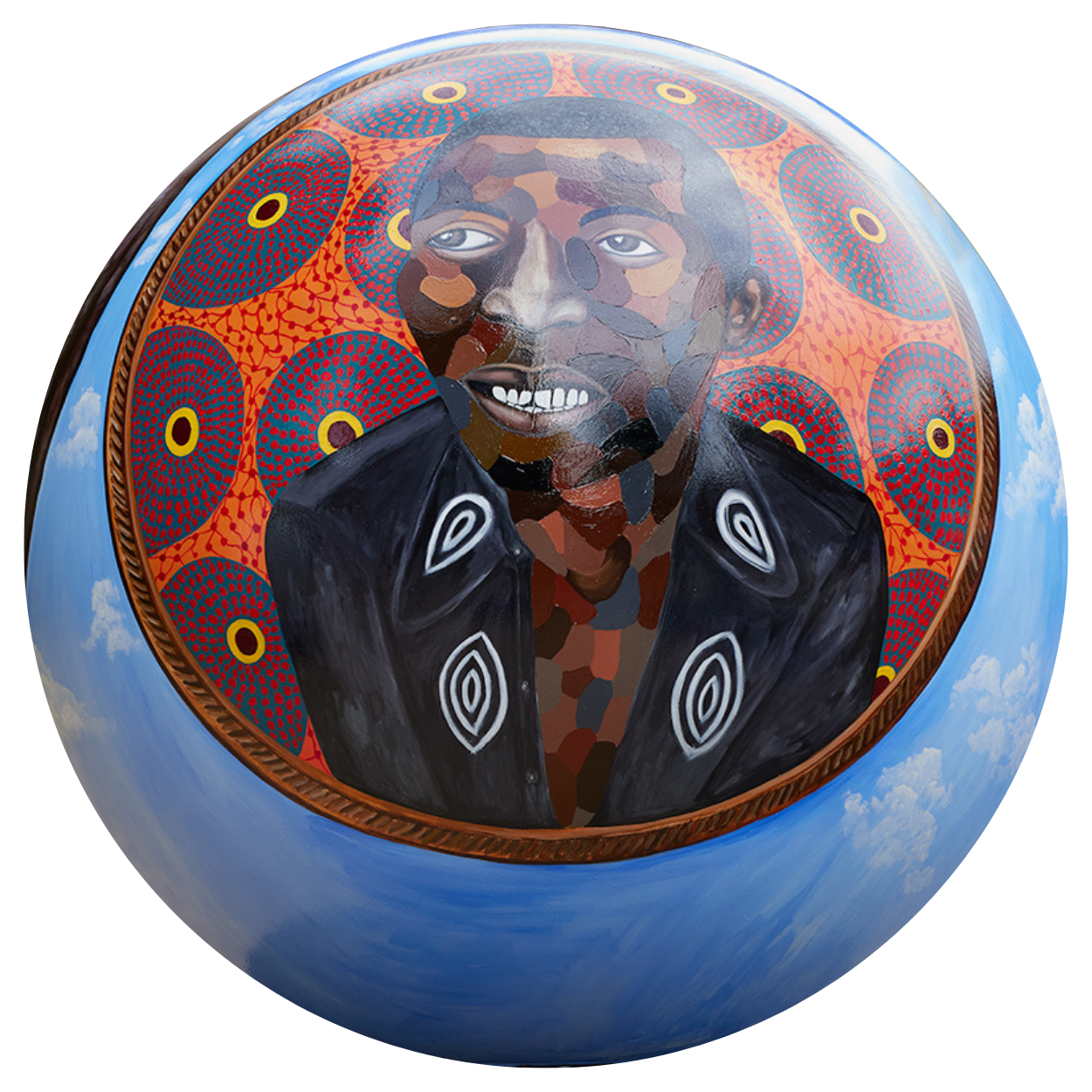
| What 3 Words: just.same.adjust |
Sarah's design responds to the theme ‘Expanding Soul’, which celebrates the spirit and culture of the African diaspora that, even in the face of incredible suffering, has endured and found vibrant expression across the world in music, art, food and so much more.
Sarah Owusu’s globe explores the richness of Africa and the abundance of creativity that flows from the continent. The subjects chosen explore the richness of our food, creativity and art. Despite Africa’s resources constantly being drained, God always ensures that the cup of Africa’s abundance never runs dry and continues to overflow with creativity through music, art and fashion.
Sarah’s globe includes a portrait of the late Fela Kuti to celebrate his impact on music today and across the world. Not only did Kuti impact the world musically but he also did so politically as an activist who aided in pushing Pan-Africanism and Nkrumahism which has shaped the thinking of Africans today. Behind Fela’s painting, Owusu has used an African wax print as a medium to highlight Africans’ influence on the fashion industry across the world, especially in the last decade. Also on the globe, Owusu has painted two large fruits, a cocoa pod and a papaya. Papaya is widely consumed across the African continent and cocoa forms a significant part of Africa’s identity when it comes to agriculture; it is widely consumed and abundant in West Africa.
Finally there is a painting of the Ashanti stool, a sacred symbol of the Ashanti people of Ghana and one that has been largely stolen and copied by many different cultures across the world. This stool has also been looted and placed in many museums including in Britain, the United States of America and several other museums across the world. African art, although ignorantly referred to as “primitive” by most scholars, continues to show us that Africa was not only the cradle of civilisation but also indeed the birthplace of creativity.
Overall, the vibrancy of the colours used on the globe are an accurate representation of Black culture: vibrant, exuberant and colourful.
Sarah Owusu (b.1991) is a Ghanaian British artist. Currently living and working in London. She studied at the University of Essex, earning a BSc (Hons) in Psychology but became immersed in painting after being introduced to the power of art and the possibilities embedded within painting. Her expressive portraits utilise striking, bold and distinctive shapes in different forms. Sarah has since been practising full-time till date, hosting workshops, artist talks and art exhibitions.
Sarah's design responds to the theme ‘Expanding Soul’, which celebrates the spirit and culture of the African diaspora that, even in the face of incredible suffering, has endured and found vibrant expression across the world in music, art, food and so much more.
Sarah Owusu’s globe explores the richness of Africa and the abundance of creativity that flows from the continent. The subjects chosen explore the richness of our food, creativity and art. Despite Africa’s resources constantly being drained, God always ensures that the cup of Africa’s abundance never runs dry and continues to overflow with creativity through music, art and fashion.
Sarah’s globe includes a portrait of the late Fela Kuti to celebrate his impact on music today and across the world. Not only did Kuti impact the world musically but he also did so politically as an activist who aided in pushing Pan-Africanism and Nkrumahism which has shaped the thinking of Africans today. Behind Fela’s painting, Owusu has used an African wax print as a medium to highlight Africans’ influence on the fashion industry across the world, especially in the last decade. Also on the globe, Owusu has painted two large fruits, a cocoa pod and a papaya. Papaya is widely consumed across the African continent and cocoa forms a significant part of Africa’s identity when it comes to agriculture; it is widely consumed and abundant in West Africa.
Finally there is a painting of the Ashanti stool, a sacred symbol of the Ashanti people of Ghana and one that has been largely stolen and copied by many different cultures across the world. This stool has also been looted and placed in many museums including in Britain, the United States of America and several other museums across the world. African art, although ignorantly referred to as “primitive” by most scholars, continues to show us that Africa was not only the cradle of civilisation but also indeed the birthplace of creativity.
Overall, the vibrancy of the colours used on the globe are an accurate representation of Black culture: vibrant, exuberant and colourful.
Sarah Owusu (b.1991) is a Ghanaian British artist. Currently living and working in London. She studied at the University of Essex, earning a BSc (Hons) in Psychology but became immersed in painting after being introduced to the power of art and the possibilities embedded within painting. Her expressive portraits utilise striking, bold and distinctive shapes in different forms. Sarah has since been practising full-time till date, hosting workshops, artist talks and art exhibitions.

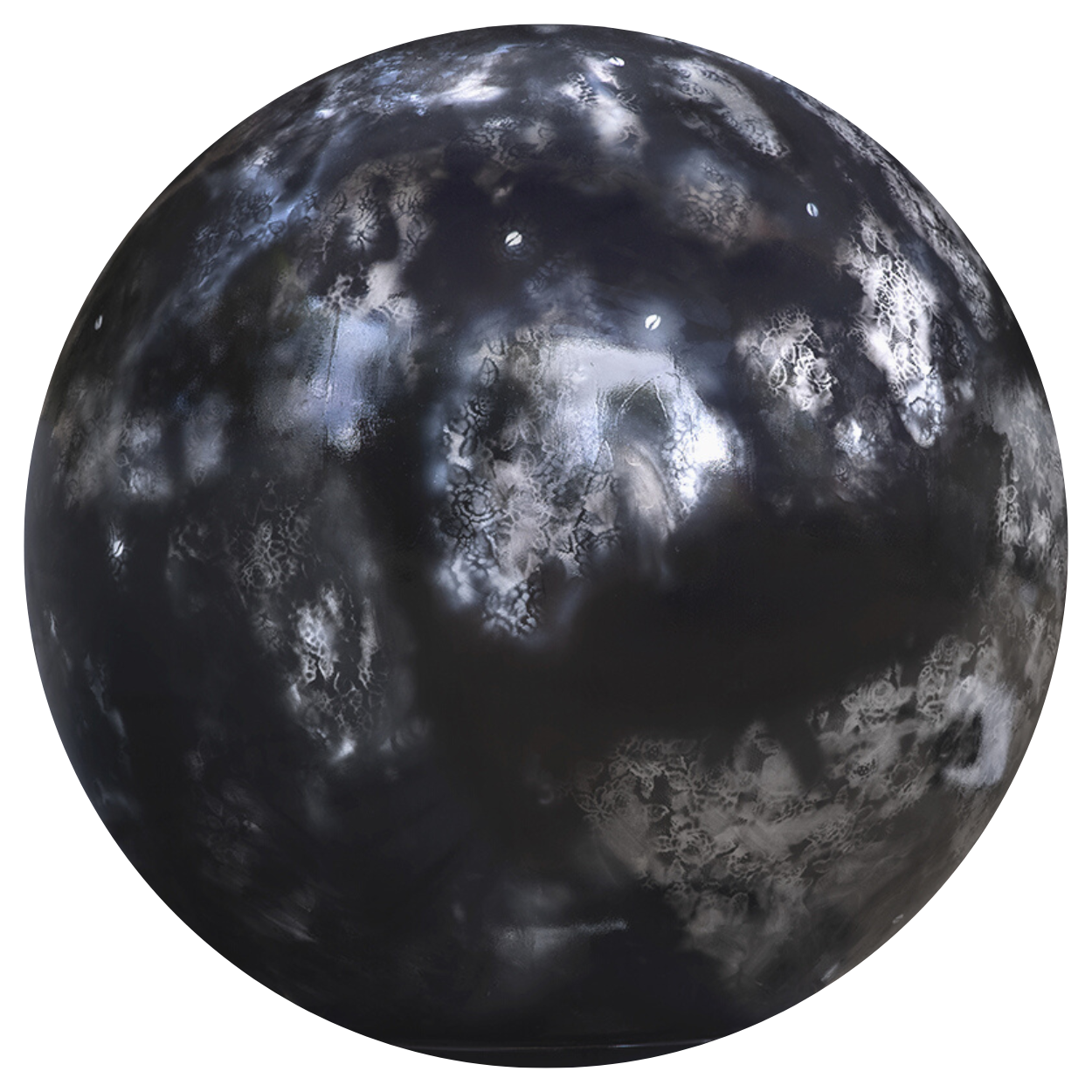
| By Sidings Street Bus Stop, Olympic Park |
Hamed's design responds to the theme ‘Still We Rise’, which recognises and honours the enslaved and their descendants who resisted, who succeeded, and who broke new ground. We honour the well-known and celebrated, and shed light on untold legacies and events.
Èémí (breath/life force/soul) is described as a fundamental essence of our being in traditional yoruba mythology. It's one of three aspects of our human personality (emi, ojiji, eleda). Èémí fills our lungs and connects us to the world around us. This globe uses the concept of breath to imprint aspects of memory onto a physical surface as a way to reconnect with our memories.
The lace imprints reference notions of diasporic identity and domesticity. Lace comes with a history which is not often remembered. Historians have made the connection between the start of slavery in the UK, the industrial revolution & the invention of the knitting frame in Nottingham, thus creating a pipeline from plantation to lace. Throughout the years lace has also been a reference to class status, once adored by the Victorians, and later finding its way into homes of the diaspora and even traditional clothing.
The cowrie imprints reference different traditional uses of the shell such as a form of currency or divination which is used as a form of fortune telling or predicting the future. The globe is imprinted with 16 cowries scattered across its surface, paying homage to the act of divination but also the original divinities that created life on Earth.
‘Our breath will be long’ engages with the viewer in a way to celebrate memory & lineage through commonplace symbols that have been forgotten or used as aesthetic adornations, in order to create a space of collective remembering. The main technique of mark making has been achieved using spray paint & airbrush, breathing life and memory into the sculpture.
Hamed Maiye is an interdisciplinary artist flitting between painting, drawing and set design. When not building his colourful installations, the London-based artist centres his stark and monochromatic works on the narratives found in his dreams.
Hamed's design responds to the theme ‘Still We Rise’, which recognises and honours the enslaved and their descendants who resisted, who succeeded, and who broke new ground. We honour the well-known and celebrated, and shed light on untold legacies and events.
Èémí (breath/life force/soul) is described as a fundamental essence of our being in traditional yoruba mythology. It's one of three aspects of our human personality (emi, ojiji, eleda). Èémí fills our lungs and connects us to the world around us. This globe uses the concept of breath to imprint aspects of memory onto a physical surface as a way to reconnect with our memories.
The lace imprints reference notions of diasporic identity and domesticity. Lace comes with a history which is not often remembered. Historians have made the connection between the start of slavery in the UK, the industrial revolution & the invention of the knitting frame in Nottingham, thus creating a pipeline from plantation to lace. Throughout the years lace has also been a reference to class status, once adored by the Victorians, and later finding its way into homes of the diaspora and even traditional clothing.
The cowrie imprints reference different traditional uses of the shell such as a form of currency or divination which is used as a form of fortune telling or predicting the future. The globe is imprinted with 16 cowries scattered across its surface, paying homage to the act of divination but also the original divinities that created life on Earth.
‘Our breath will be long’ engages with the viewer in a way to celebrate memory & lineage through commonplace symbols that have been forgotten or used as aesthetic adornations, in order to create a space of collective remembering. The main technique of mark making has been achieved using spray paint & airbrush, breathing life and memory into the sculpture.
Hamed Maiye is an interdisciplinary artist flitting between painting, drawing and set design. When not building his colourful installations, the London-based artist centres his stark and monochromatic works on the narratives found in his dreams.

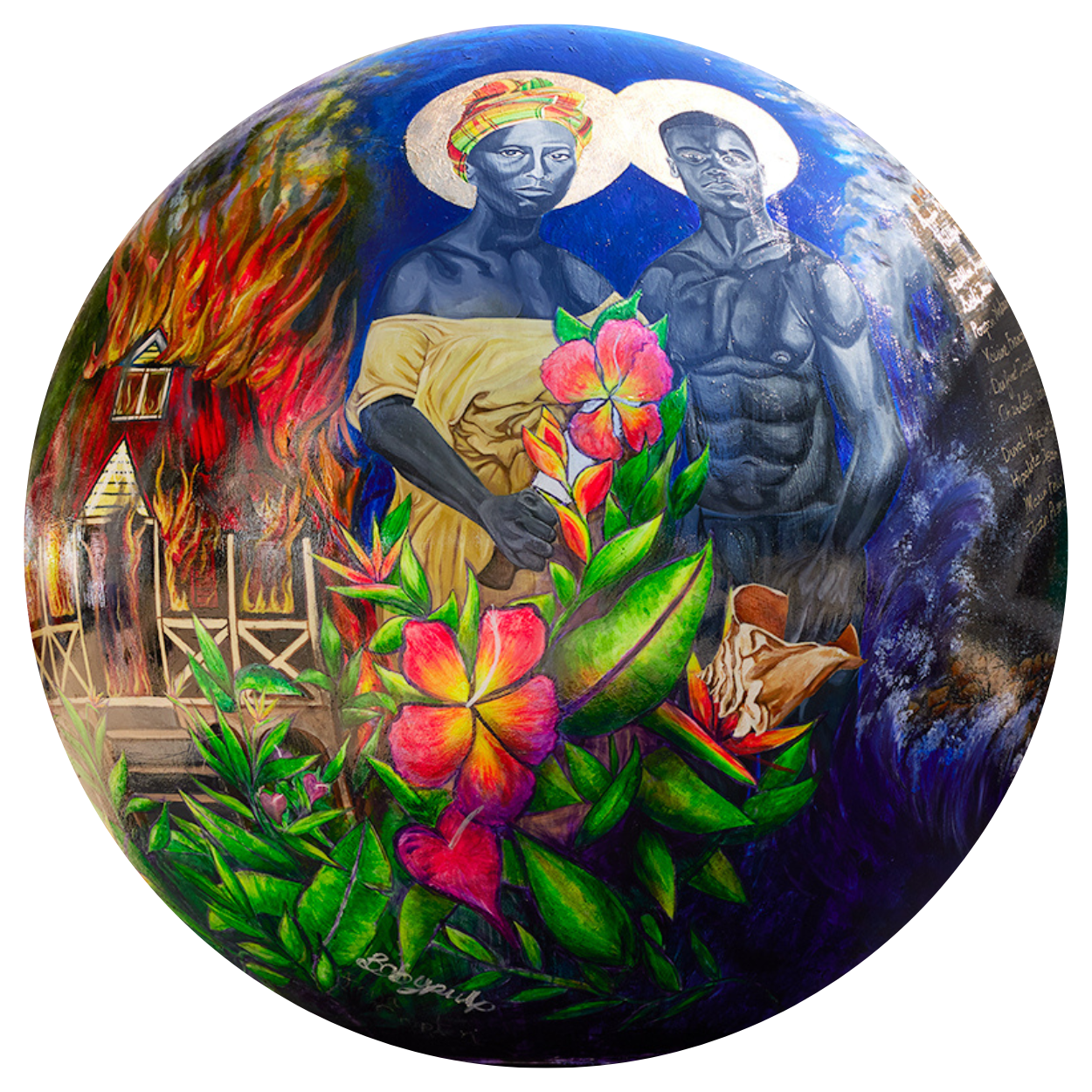
| What 3 Words: belt.cube.hoping |
Fiona & Hailey’s design responds to the theme ‘Abolition & Emancipation’, which shares the story of the campaign for abolition, its key events, heroes and allies. It also lays bare the full, messy motivations and process of abolition, which were not as pure as often represented.
A journey of resistance, we tell the story of the revolution in Saint Lucia. Hundreds of enslaved men, women and children unified in defense of their freedom, fighting against the system of British slavery. So strong was this unified resistance, that many freedom fighters joined their comrades on neighbouring islands in solidarity; several islands in the 1790s were ablaze with the fire and fury of freedom.
Vastly mountainous and filled with emerald rainforests, during the revolution of the 1790s, Saint Lucia’s enslaved community rose up in revolt, forming a community of self-liberated African and Caribbean born people who lived in secret enclaves in the impenetrable forests. Called the N èg Mawon, these men and women fought fiercely and heroically in the face of the British army, who tried to suppress, pacify and re-enslave them. ‘Liberte ou la mort’ (Liberty or Death), was the call of the N èg Mawon, as the conch shell blew across the mountains, and the British Army was defeated under the fire and fury of the N èg Mawon.
Enslavement and sugar were the incentives for the British to reinvade Saint Lucia after many months of celebrated freedom, and many men, women and children who fought for their freedom were taken as prisoners of war to Porchester Castle, Portsmouth. Some died along the way in the murky waters of the British coastline – their souls carried home by ancestral spirits.
Today we honour the N èg Mawon; their fire, fury and fight for freedom. The globe was created as a collaboration between two Saint Lucian artists – Hailey Gonzales and Fiona Compton.
Fiona Compton is a London based Saint Lucian photographer, artist, filmmaker and historian. After graduating from London College of Printing in 2005 with a BA in photography, Fiona has been working as a professional photographer, working for the UK’s largest publishing houses, travelling between the UK and Europe to photograph some of the most influential figures in the world of Finance and Banking. Over the past 13 years her work has explored the various disparities in representation of the Afro Caribbean diaspora within art and mainstream media. In 2017 she launched her multi disciplinary project ‘The Revolution of the Fairytale’ which celebrates lesser known heroes from Black History under the nostalgic platform of well known fairy tales. Fiona remains a strong advocate for her history and culture and is an Official Ambassador for London’s Notting Hill Carnival, the second largest street festival in the world.
Fiona & Hailey’s design responds to the theme ‘Abolition & Emancipation’, which shares the story of the campaign for abolition, its key events, heroes and allies. It also lays bare the full, messy motivations and process of abolition, which were not as pure as often represented.
A journey of resistance, we tell the story of the revolution in Saint Lucia. Hundreds of enslaved men, women and children unified in defense of their freedom, fighting against the system of British slavery. So strong was this unified resistance, that many freedom fighters joined their comrades on neighbouring islands in solidarity; several islands in the 1790s were ablaze with the fire and fury of freedom.
Vastly mountainous and filled with emerald rainforests, during the revolution of the 1790s, Saint Lucia’s enslaved community rose up in revolt, forming a community of self-liberated African and Caribbean born people who lived in secret enclaves in the impenetrable forests. Called the N èg Mawon, these men and women fought fiercely and heroically in the face of the British army, who tried to suppress, pacify and re-enslave them. ‘Liberte ou la mort’ (Liberty or Death), was the call of the N èg Mawon, as the conch shell blew across the mountains, and the British Army was defeated under the fire and fury of the N èg Mawon.
Enslavement and sugar were the incentives for the British to reinvade Saint Lucia after many months of celebrated freedom, and many men, women and children who fought for their freedom were taken as prisoners of war to Porchester Castle, Portsmouth. Some died along the way in the murky waters of the British coastline – their souls carried home by ancestral spirits.
Today we honour the N èg Mawon; their fire, fury and fight for freedom. The globe was created as a collaboration between two Saint Lucian artists – Hailey Gonzales and Fiona Compton.
Fiona Compton is a London based Saint Lucian photographer, artist, filmmaker and historian. After graduating from London College of Printing in 2005 with a BA in photography, Fiona has been working as a professional photographer, working for the UK’s largest publishing houses, travelling between the UK and Europe to photograph some of the most influential figures in the world of Finance and Banking. Over the past 13 years her work has explored the various disparities in representation of the Afro Caribbean diaspora within art and mainstream media. In 2017 she launched her multi disciplinary project ‘The Revolution of the Fairytale’ which celebrates lesser known heroes from Black History under the nostalgic platform of well known fairy tales. Fiona remains a strong advocate for her history and culture and is an Official Ambassador for London’s Notting Hill Carnival, the second largest street festival in the world.


| Theatre Square, Stratford |
Serena’s design responds to the theme ‘Expanding Soul’, which celebrates the spirit and culture of the African diaspora that, even in the face of incredible suffering, has endured and found vibrant expression across the world in music, art, food and so much more.
Music is uplifting, an expression, an escape and it is learning. The history of black music and its contribution to British identity cannot be underestimated. Enslaved people shipped from Africa to the plantations of America and the Caribbean used traditional songs and hymns not just to raise their spirits in times of oppression and captivity, but also as warnings and even clues as to how they may escape captivity. Their masters may have taken their physical freedom but they could not take their soulful musical intelligence.
Music can educate, relax, console, inspire, heal, excite; powerful words in song teach and inform generations past, present and future. Music can free people’s minds from the everyday struggles they encounter. Songs affect the soul from the moment we are born to the day we die.
My design includes words of songs sung by the enslaved in the 1700s and 1800s. Today’s music has been inspired by the past, and passed through many generations. The circles of music represent speakers on a sound system and music coming outwards across the globe and continually diversifying; music that has its roots in folk and African song. The yellow and orange background represents the sun and hot climate of Mother Africa; and the red, the passion and outrage. The skin tone hearts reference the people of historical slavery but also those trapped in modern slavery today.
The strength and spirit of oppressed souls of history has influenced music throughout the centuries to this day. And even today, music helps those who are still not free to find inspiration and to fight for a better future.
Serena’s work is mainly landscapes, seascapes and nature in oil and mixed media paintings on canvas. She takes inspiration from the world around her, creating works of art that reveal the wonders of nature and the environment.
Serena’s design responds to the theme ‘Expanding Soul’, which celebrates the spirit and culture of the African diaspora that, even in the face of incredible suffering, has endured and found vibrant expression across the world in music, art, food and so much more.
Music is uplifting, an expression, an escape and it is learning. The history of black music and its contribution to British identity cannot be underestimated. Enslaved people shipped from Africa to the plantations of America and the Caribbean used traditional songs and hymns not just to raise their spirits in times of oppression and captivity, but also as warnings and even clues as to how they may escape captivity. Their masters may have taken their physical freedom but they could not take their soulful musical intelligence.
Music can educate, relax, console, inspire, heal, excite; powerful words in song teach and inform generations past, present and future. Music can free people’s minds from the everyday struggles they encounter. Songs affect the soul from the moment we are born to the day we die.
My design includes words of songs sung by the enslaved in the 1700s and 1800s. Today’s music has been inspired by the past, and passed through many generations. The circles of music represent speakers on a sound system and music coming outwards across the globe and continually diversifying; music that has its roots in folk and African song. The yellow and orange background represents the sun and hot climate of Mother Africa; and the red, the passion and outrage. The skin tone hearts reference the people of historical slavery but also those trapped in modern slavery today.
The strength and spirit of oppressed souls of history has influenced music throughout the centuries to this day. And even today, music helps those who are still not free to find inspiration and to fight for a better future.
Serena’s work is mainly landscapes, seascapes and nature in oil and mixed media paintings on canvas. She takes inspiration from the world around her, creating works of art that reveal the wonders of nature and the environment.

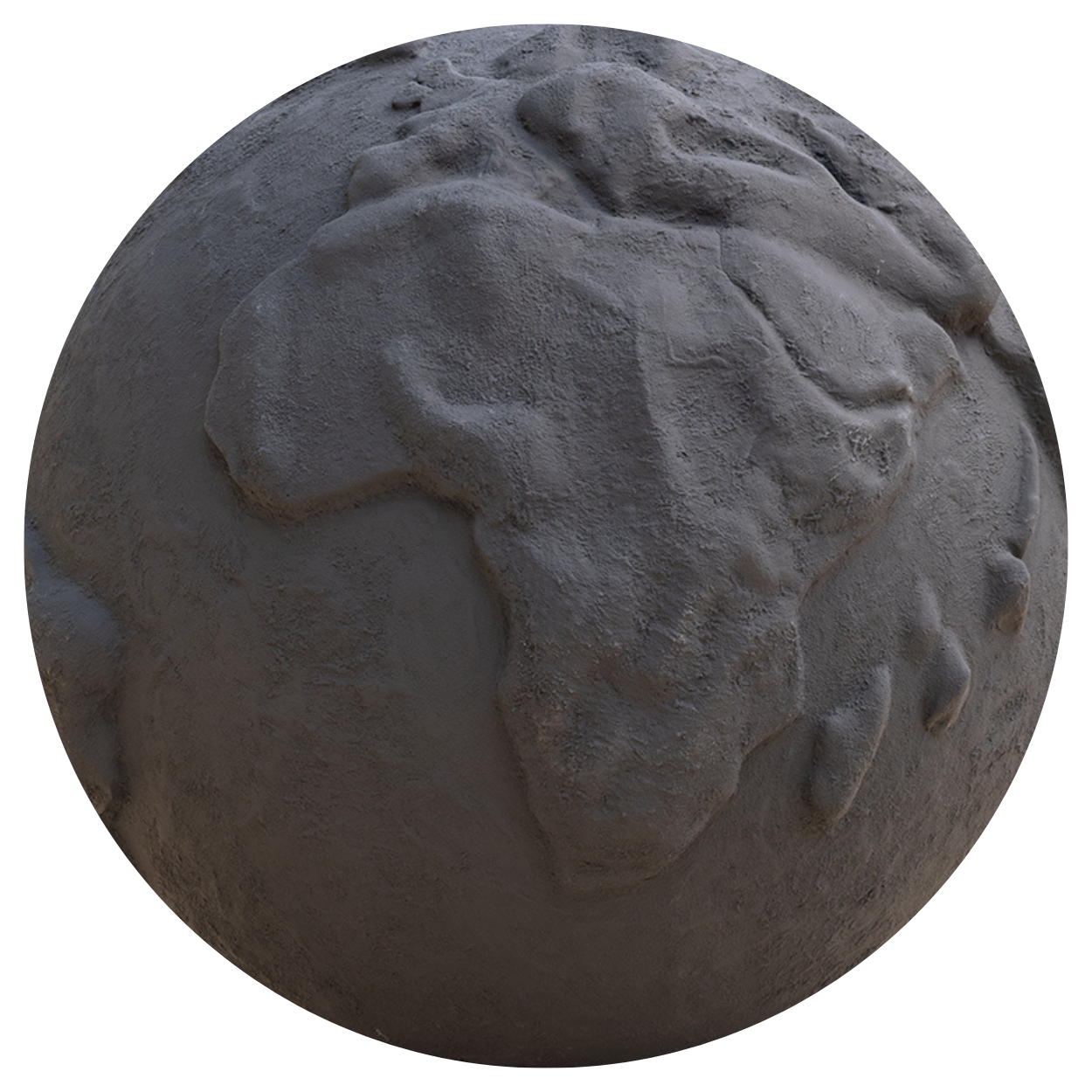
| Stratford International |
Julian’s design responds to the theme ‘Reimagine the Future’, which gives us free rein to imagine the society we can create when we have a full understanding of our shared history; the place we can hold in the world when it acknowledges its past; and who we can be as people and a country when we give full dignity to all.
If we consider the ocean as a point of departure and meeting, what does it mean if we carry the ocean with us? If all in the African diaspora are at once singular yet connected to a multiplicity of lands, identities, and cultures, can new freedom be found in thinking of oneself as part of a global community of black experience and expression?
What’s Left of Us? considers the world with no seas and oceans. It is an ongoing artistic exploration of the psychic and cultural binds that connect us. The ocean occupies a distinct place in the histories of African diasporas, becoming a symbol of life and loss, death and rapture, hope and tragedy, whilst continuing to operate as a conduit for shared experiences - history left us an ocean.
When viewing the globe from this perspective, the physical connection between lands becomes apparent. However, beyond the reveal of the earth devoid of water, the erasure contains a violent aspect to it, alluding to a world devoid of Black peoples and our contributions through time - as with water Black peoples have nourished our globe through history.
The globe prompts a psychological shift toward connectivity, to see ourselves as people of movement, flowing across our world like the oceans themselves.
Born in Sierra Leone, Julianknxx is a poet, visual artist and filmmaker whose practice crosses the boundaries of written word, music and visual art. Through his practice Julianknxx explores themes of inheritance, loss, and belonging, and their effects on personal and interpersonal narratives.
Julian’s design responds to the theme ‘Reimagine the Future’, which gives us free rein to imagine the society we can create when we have a full understanding of our shared history; the place we can hold in the world when it acknowledges its past; and who we can be as people and a country when we give full dignity to all.
If we consider the ocean as a point of departure and meeting, what does it mean if we carry the ocean with us? If all in the African diaspora are at once singular yet connected to a multiplicity of lands, identities, and cultures, can new freedom be found in thinking of oneself as part of a global community of black experience and expression?
What’s Left of Us? considers the world with no seas and oceans. It is an ongoing artistic exploration of the psychic and cultural binds that connect us. The ocean occupies a distinct place in the histories of African diasporas, becoming a symbol of life and loss, death and rapture, hope and tragedy, whilst continuing to operate as a conduit for shared experiences - history left us an ocean.
When viewing the globe from this perspective, the physical connection between lands becomes apparent. However, beyond the reveal of the earth devoid of water, the erasure contains a violent aspect to it, alluding to a world devoid of Black peoples and our contributions through time - as with water Black peoples have nourished our globe through history.
The globe prompts a psychological shift toward connectivity, to see ourselves as people of movement, flowing across our world like the oceans themselves.
Born in Sierra Leone, Julianknxx is a poet, visual artist and filmmaker whose practice crosses the boundaries of written word, music and visual art. Through his practice Julianknxx explores themes of inheritance, loss, and belonging, and their effects on personal and interpersonal narratives.

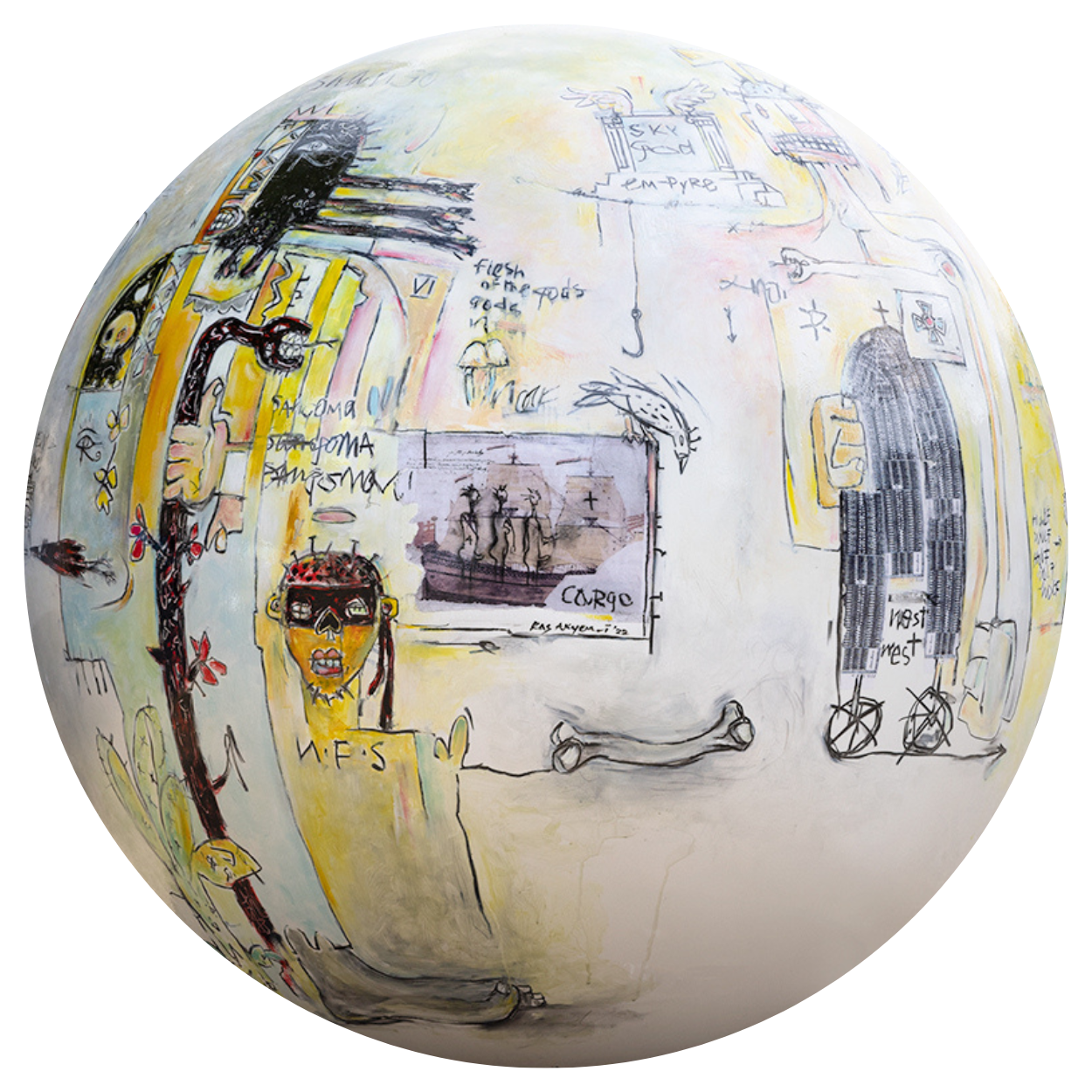
| What 3 Words: summer.outer.gossip |
Ras’s design responds to the theme ‘Mother Africa’, which explores the richness and reality of Africa before the Transatlantic Trade in Enslaved Africans; the impact of the Transatlantic Trade in Enslaved Africans and European colonialism on Africa; and considers and celebrates Africa’s present and future.
I've always held the conviction that Visual Art ought to be "experienced" rather than explained. Explanations often carry the detrimental potential (entourage effect) to fix or impose meanings, which only serve to pluck flight from the wings of the imagination; much too often, we exhibit a tendency to view art with our ears, but fortunately the "eye" has no tongue!
This new body of work represents a tangent of an ongoing visual interrogation into sub-cultural acts of subversion and overt resistance to the institutional legacies of colonisation (the inner plantation*) in post-colonial Caribbean spaces.
Using the traumatized Black male/female body as prototype or protagonist, compounded with the visual-vocabulary of threatening street graffiti & incidental collage inserts of randomly coded information, these paintings aggressively boast a "savage" material content that deliberately employs primal gestures, raw abbreviated imagery and feral marks intended to suggest/convey an "aesthetic of discord", while retaining a sophisticated aura of austere refinement.
Collectively, they gesture towards a kind of mental mapping of the fractured, congested fragments of inner-city spaces and the vague, rambling geography of broken memories.
A graduate of the Edna Manley School of Art in Jamaica, Ras is a Barbadian painter with his work being heavily influenced by the Rastafari movement. In 1998 he was awarded the Barbados Service Star in that year’s Barbados Independence Honours.
Ras’s design responds to the theme ‘Mother Africa’, which explores the richness and reality of Africa before the Transatlantic Trade in Enslaved Africans; the impact of the Transatlantic Trade in Enslaved Africans and European colonialism on Africa; and considers and celebrates Africa’s present and future.
I've always held the conviction that Visual Art ought to be "experienced" rather than explained. Explanations often carry the detrimental potential (entourage effect) to fix or impose meanings, which only serve to pluck flight from the wings of the imagination; much too often, we exhibit a tendency to view art with our ears, but fortunately the "eye" has no tongue!
This new body of work represents a tangent of an ongoing visual interrogation into sub-cultural acts of subversion and overt resistance to the institutional legacies of colonisation (the inner plantation*) in post-colonial Caribbean spaces.
Using the traumatized Black male/female body as prototype or protagonist, compounded with the visual-vocabulary of threatening street graffiti & incidental collage inserts of randomly coded information, these paintings aggressively boast a "savage" material content that deliberately employs primal gestures, raw abbreviated imagery and feral marks intended to suggest/convey an "aesthetic of discord", while retaining a sophisticated aura of austere refinement.
Collectively, they gesture towards a kind of mental mapping of the fractured, congested fragments of inner-city spaces and the vague, rambling geography of broken memories.
A graduate of the Edna Manley School of Art in Jamaica, Ras is a Barbadian painter with his work being heavily influenced by the Rastafari movement. In 1998 he was awarded the Barbados Service Star in that year’s Barbados Independence Honours.

Login or Register to track the Globes you visit for chance to win a FREE copy of The World Reimagined book!
Find Out More


Artist Globe |
Learning Globe |
Points of Interest |